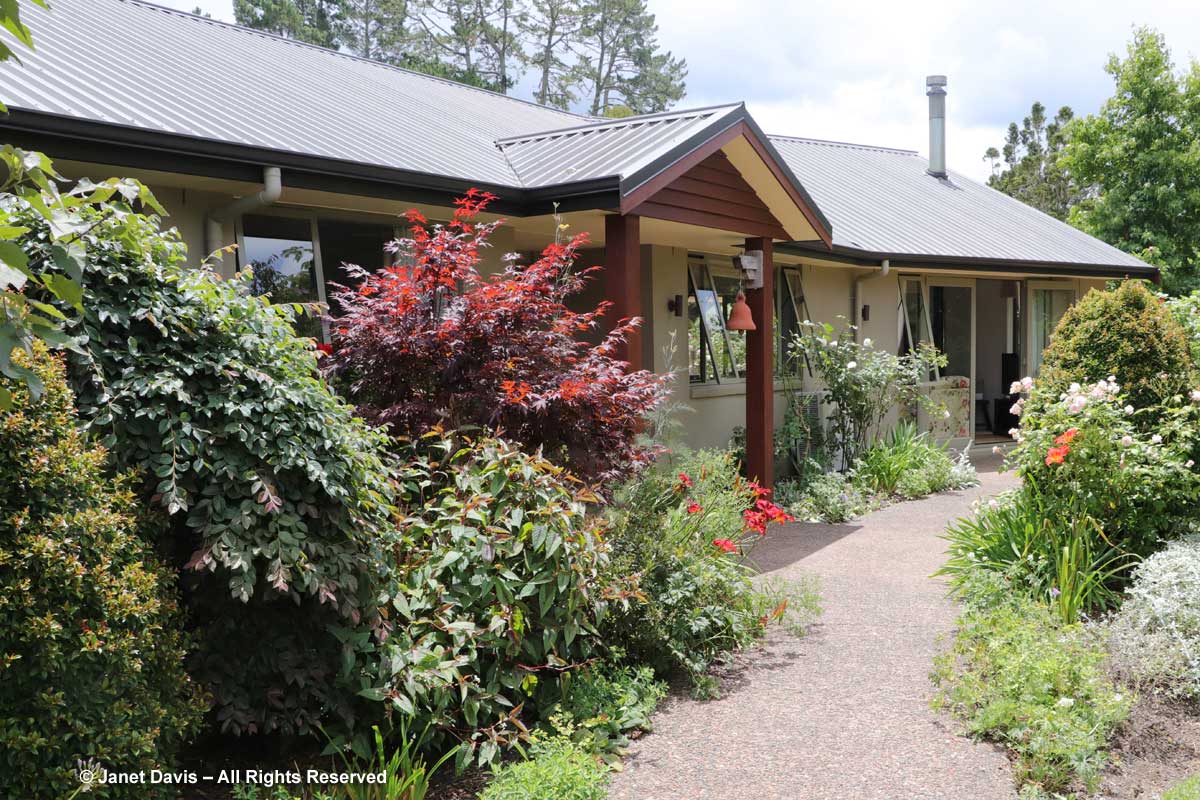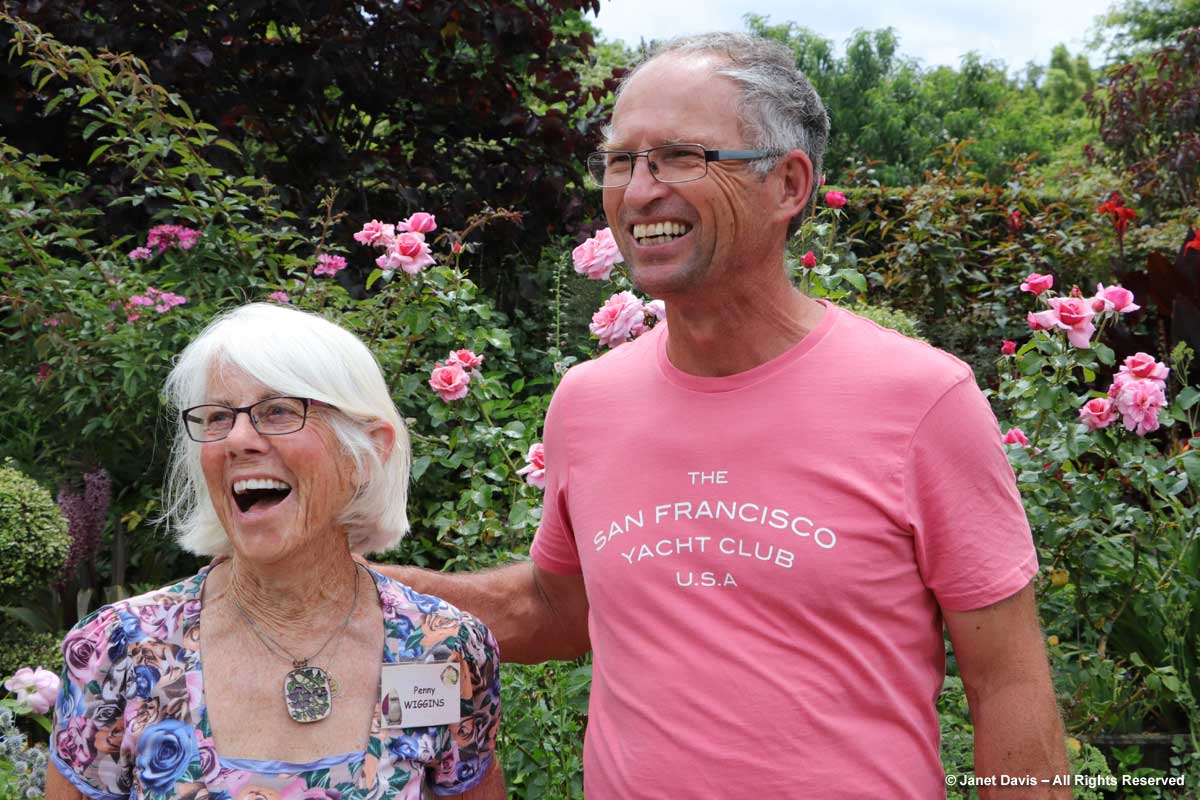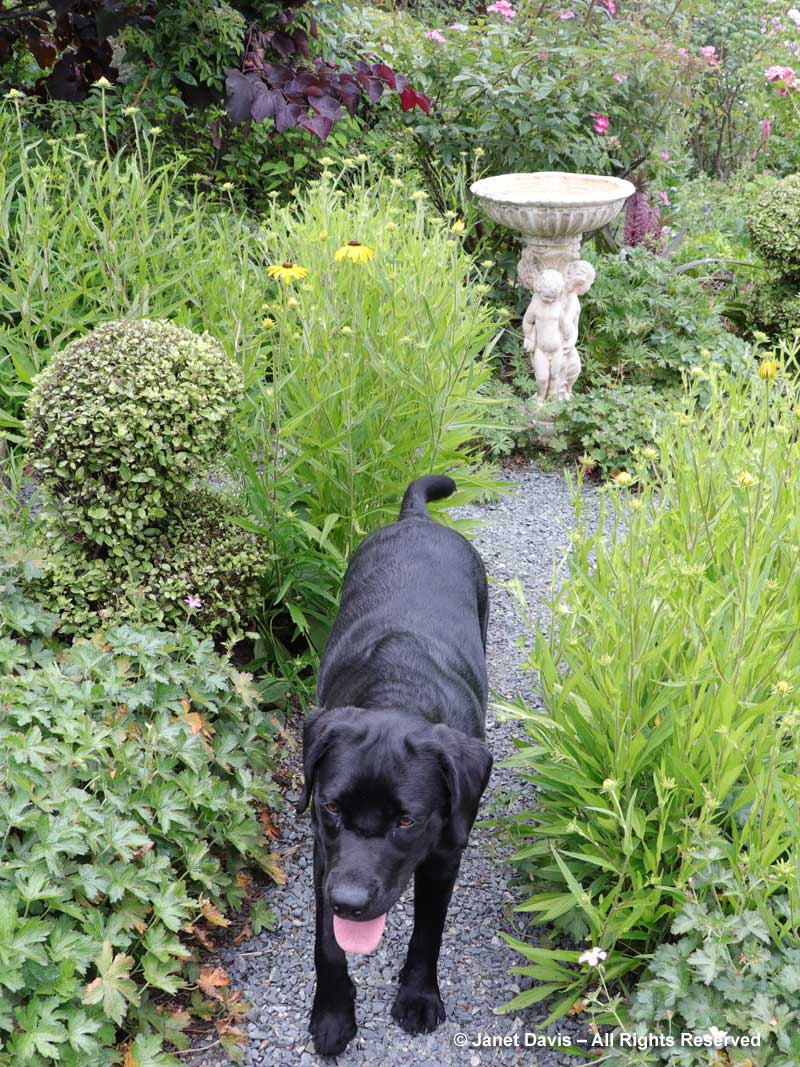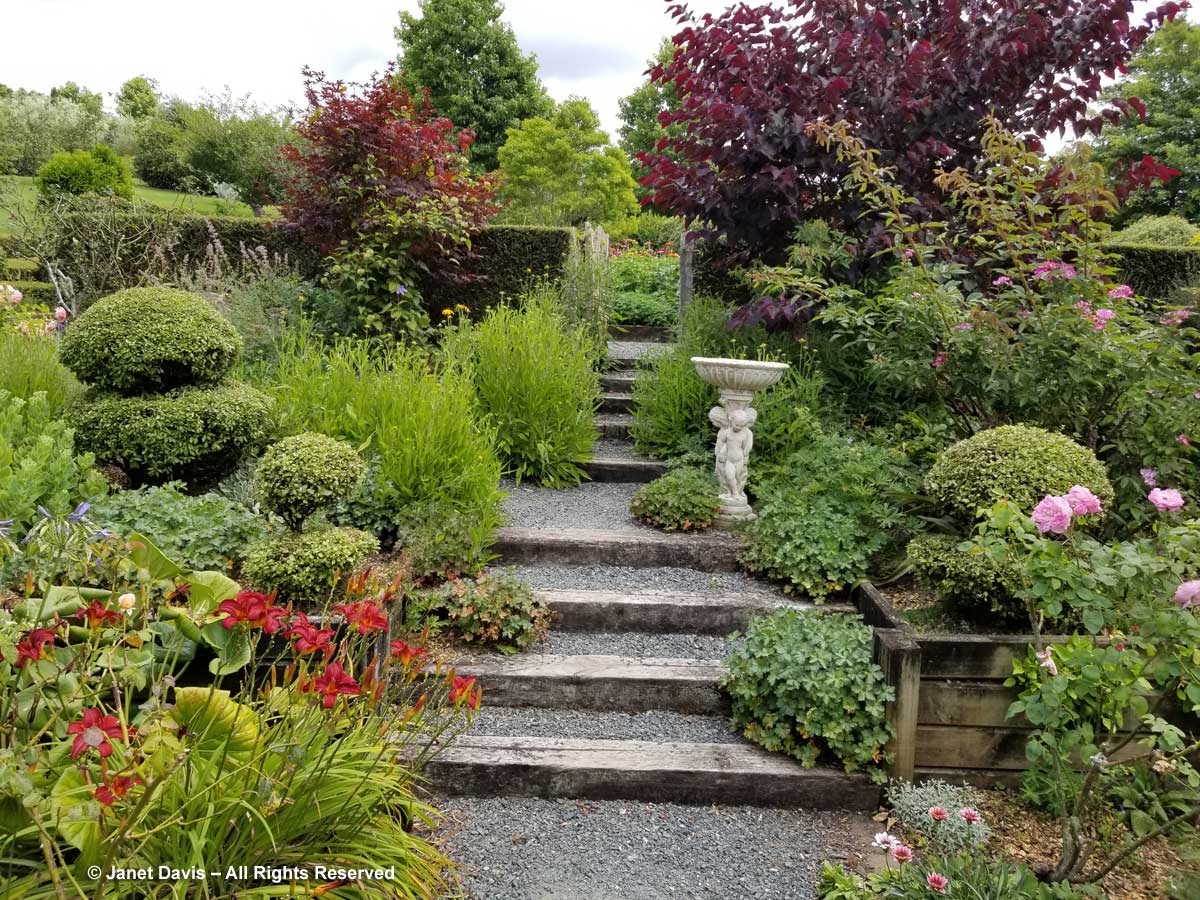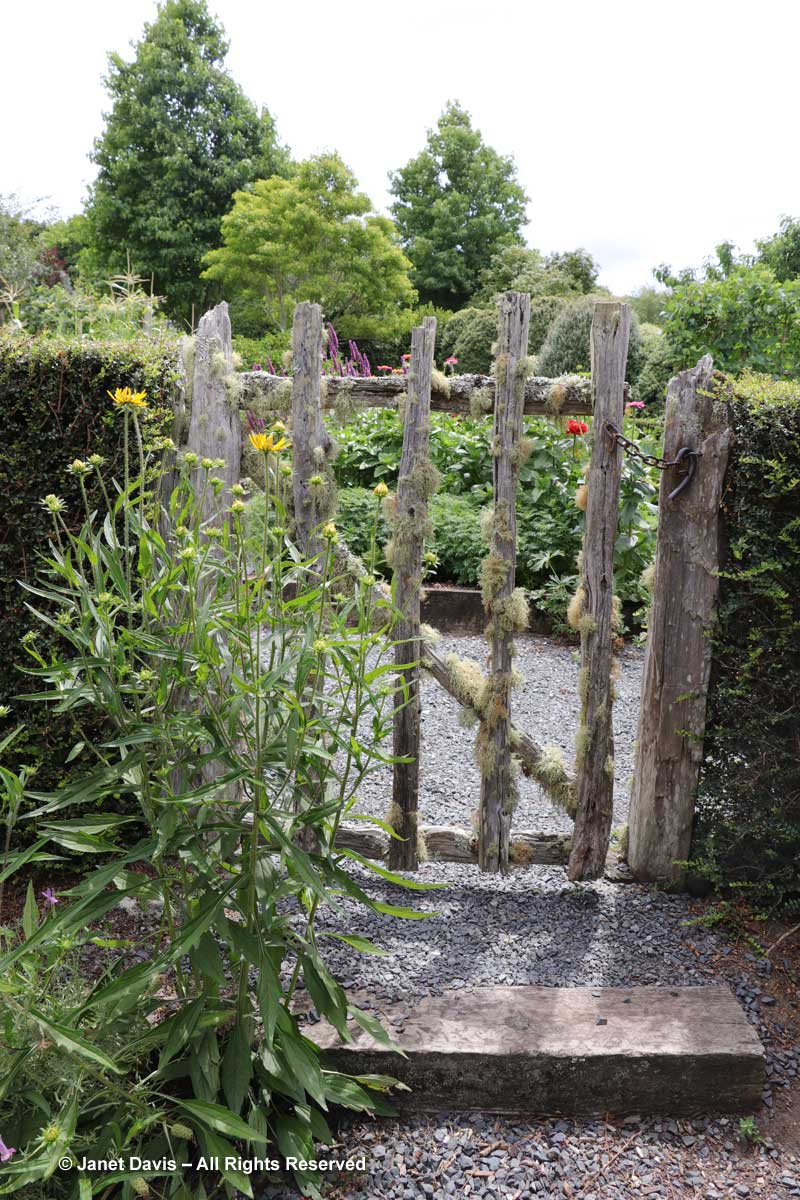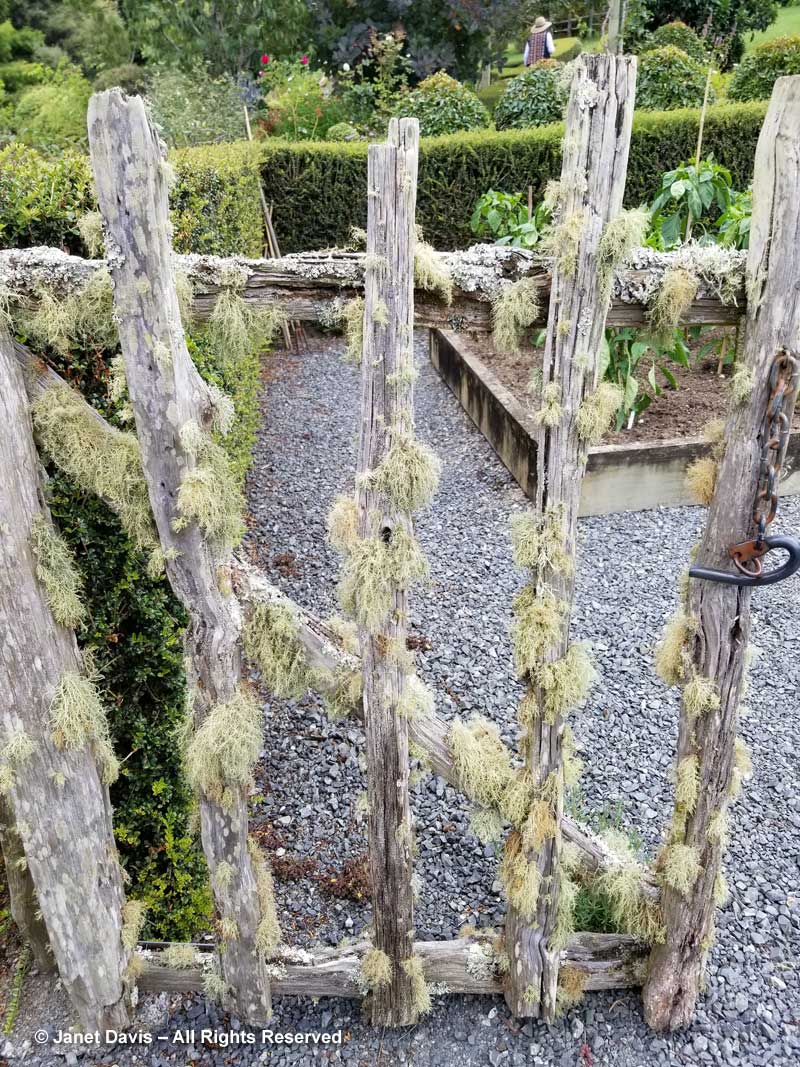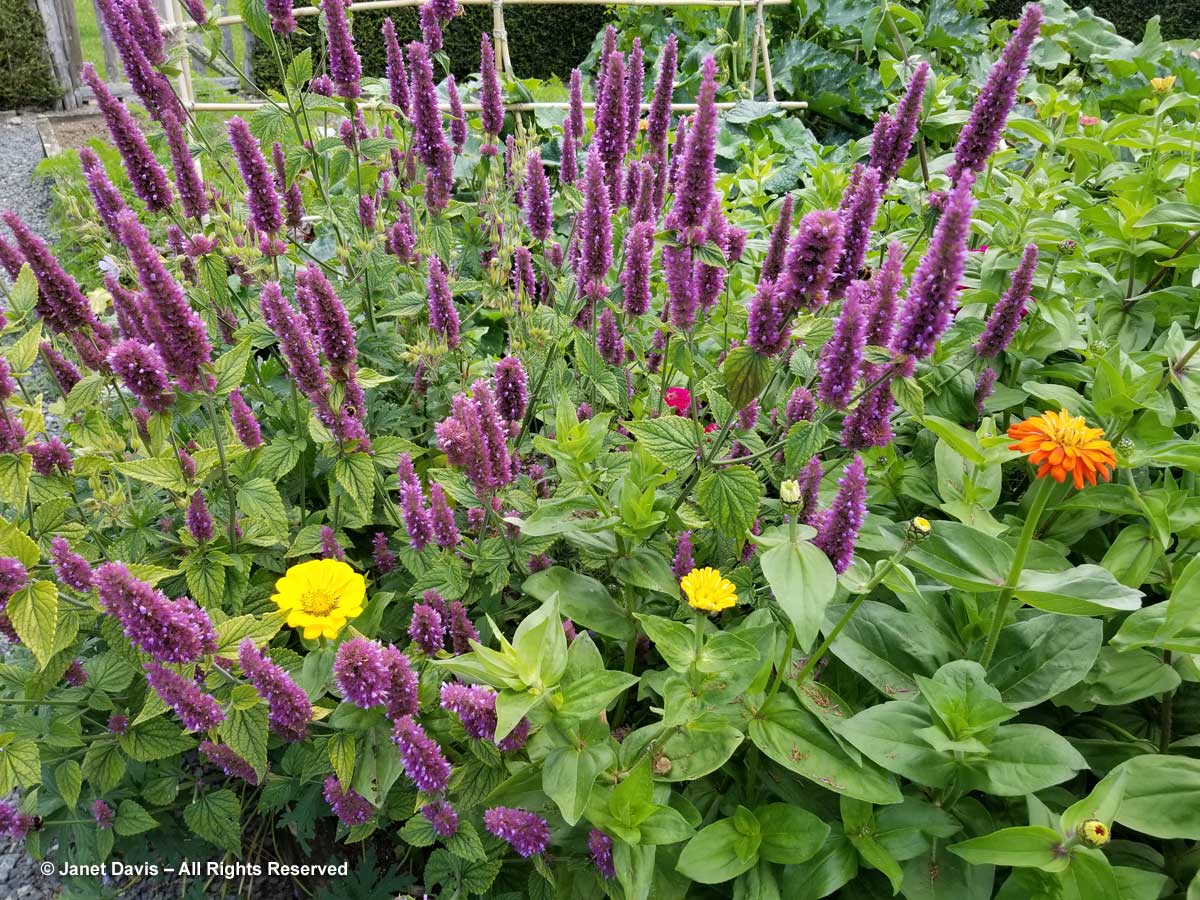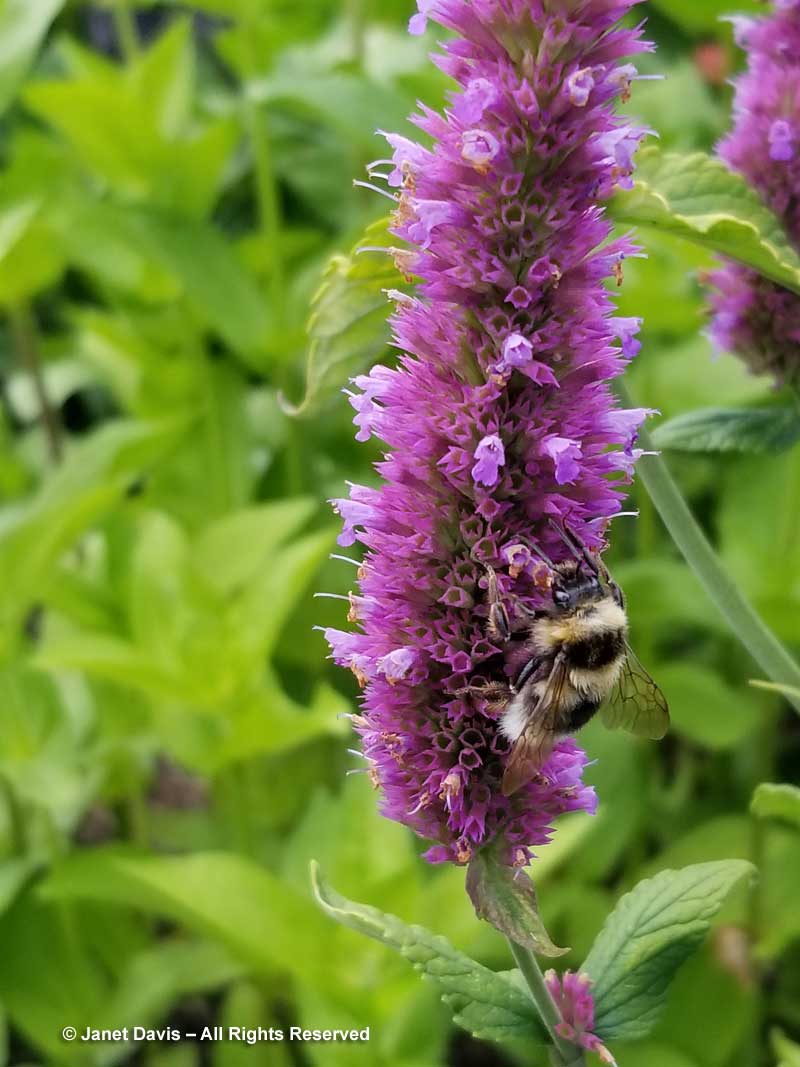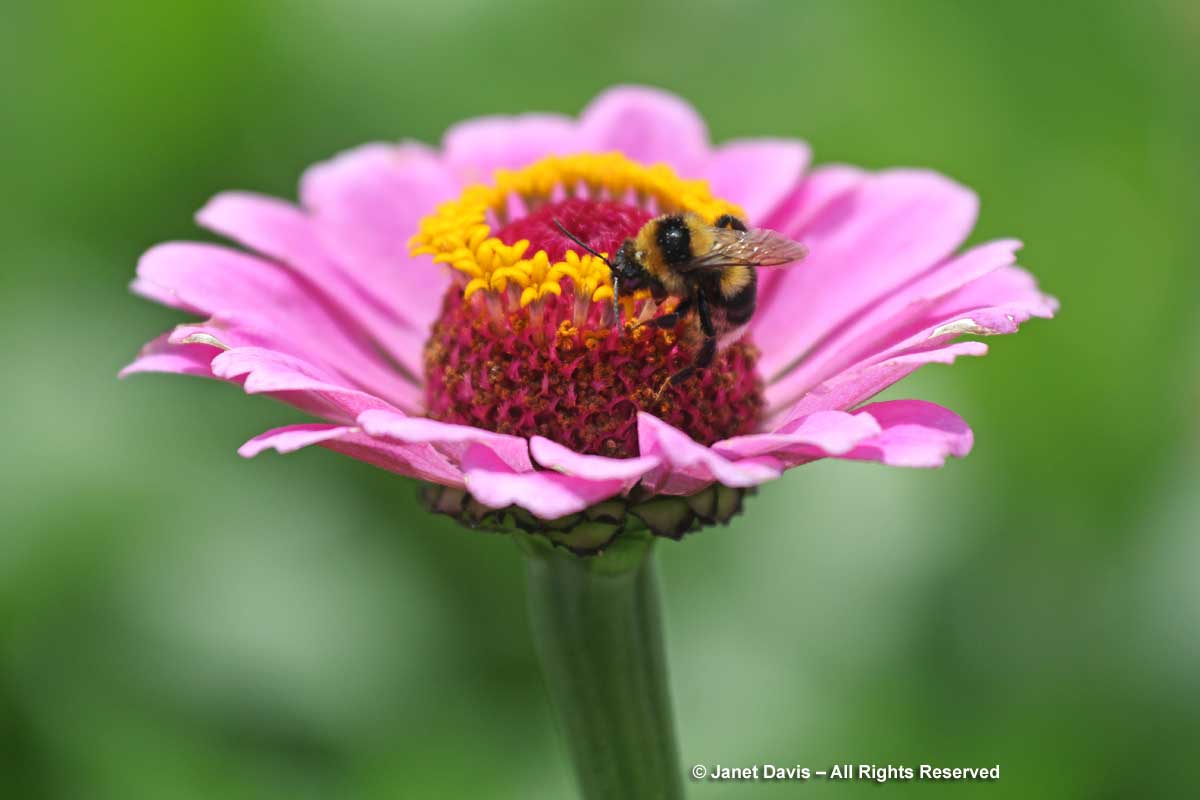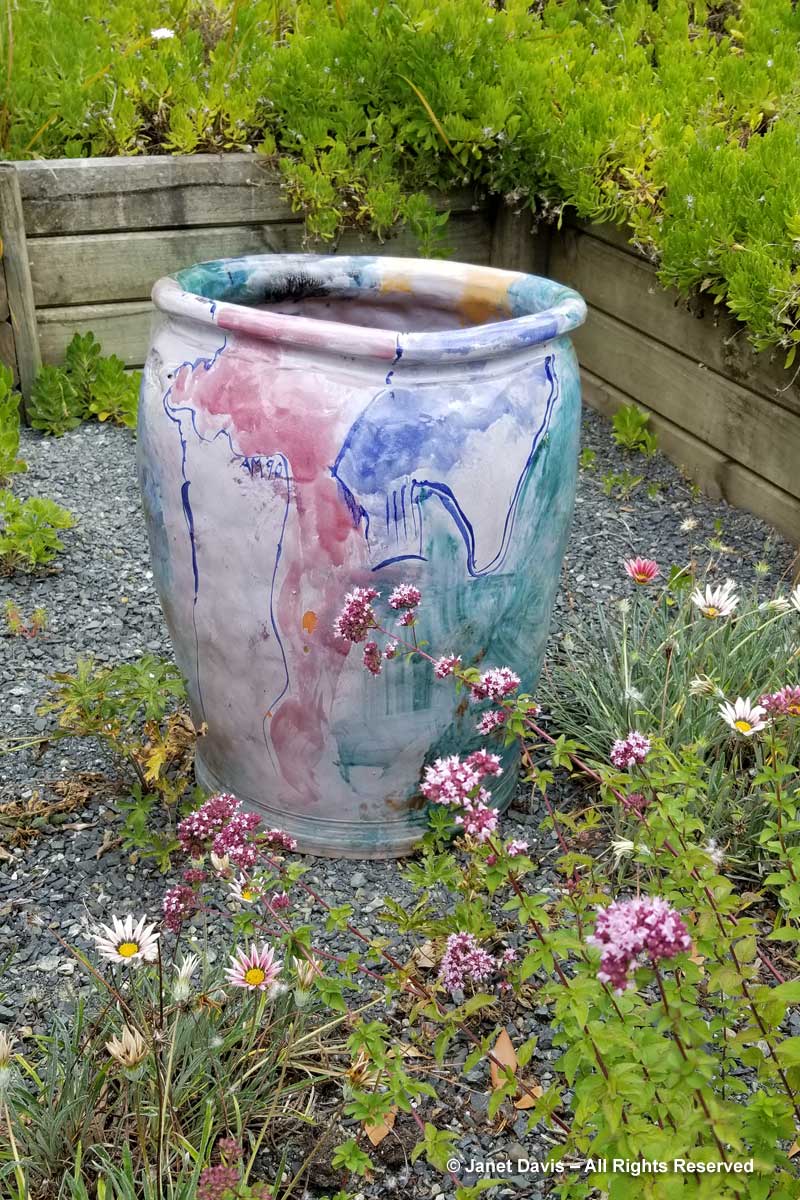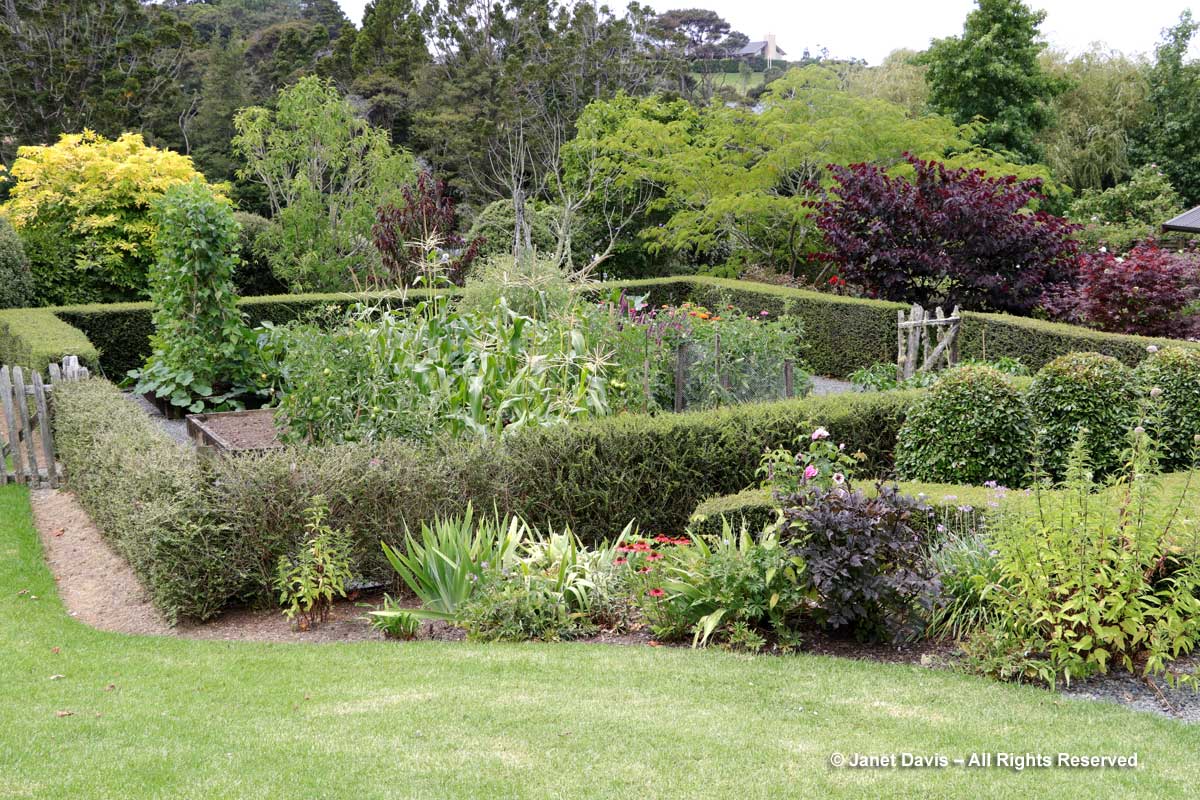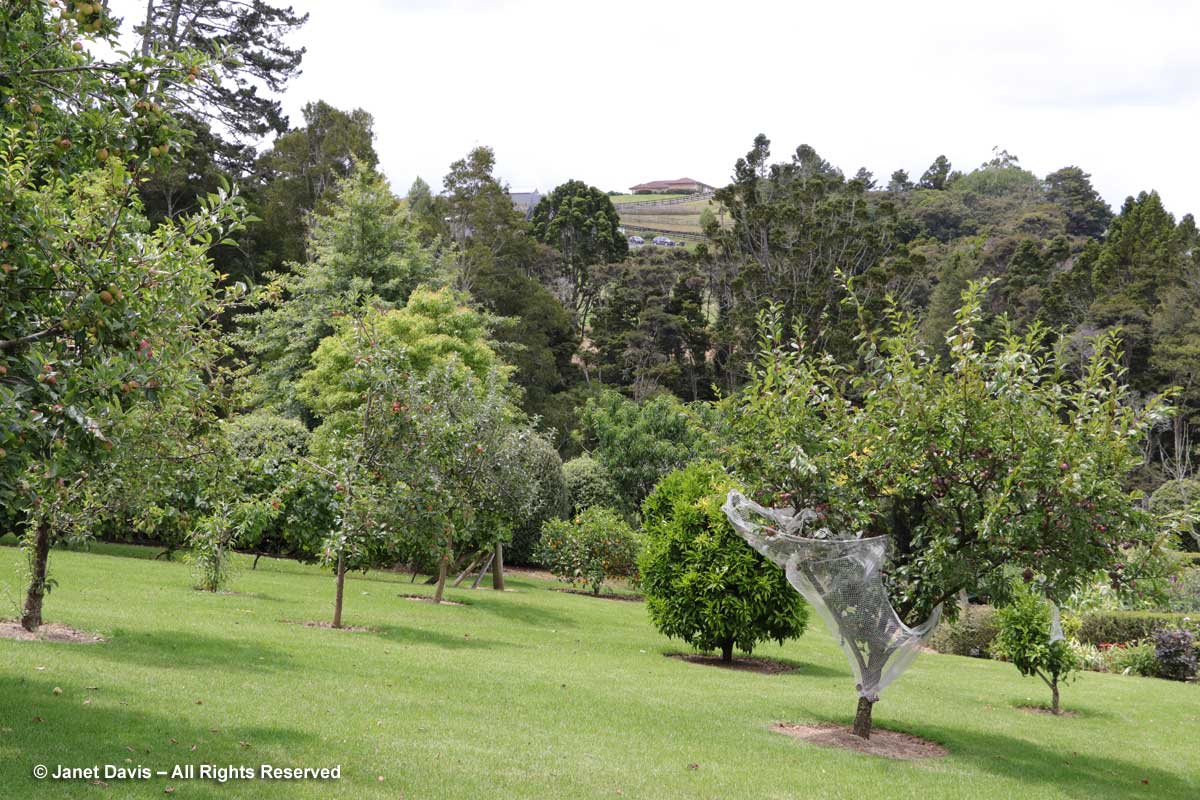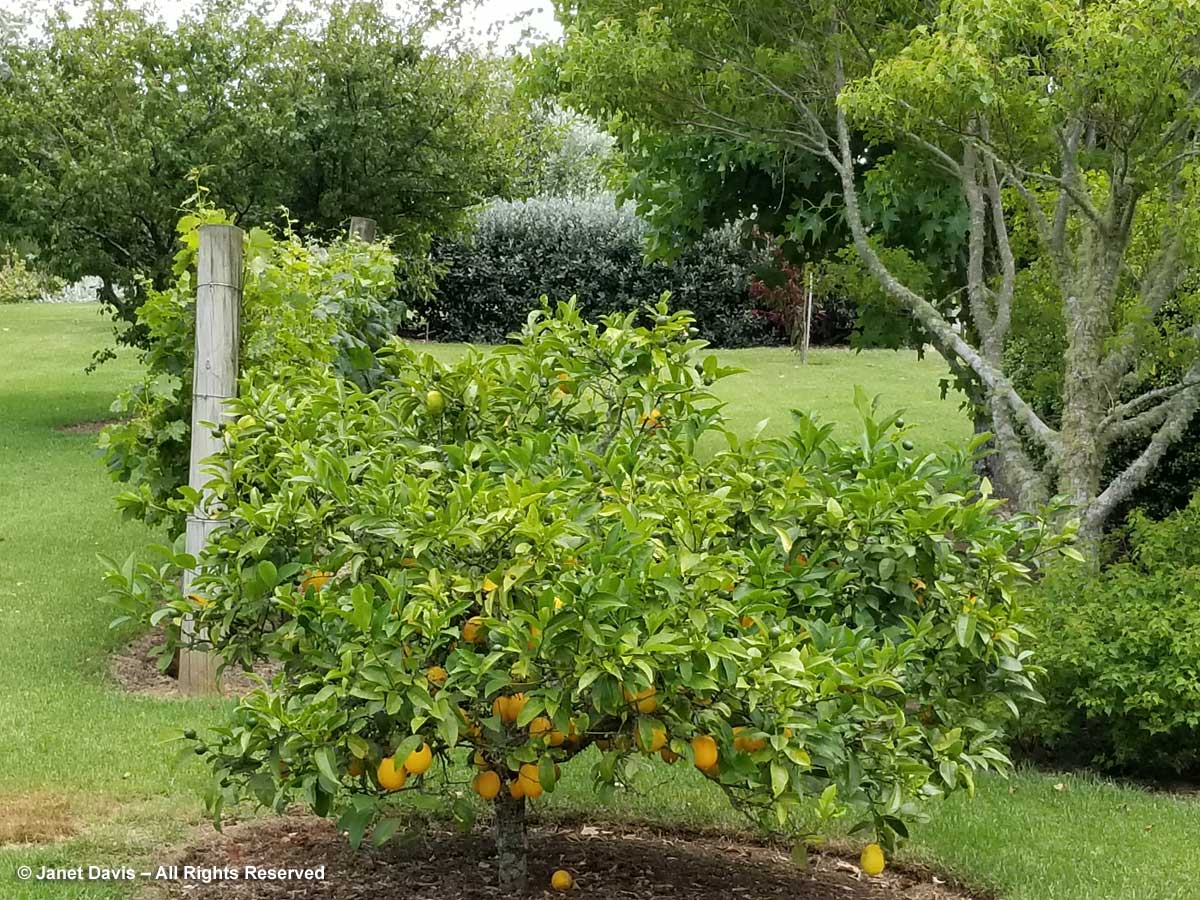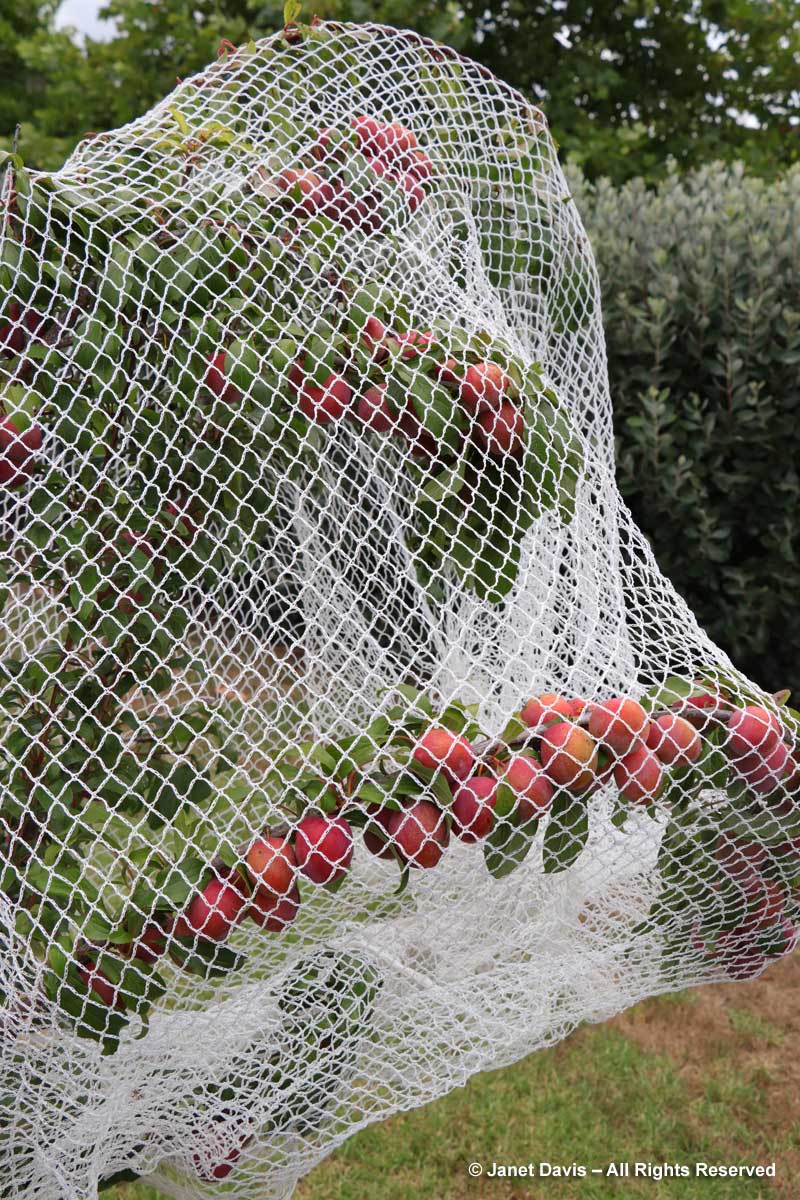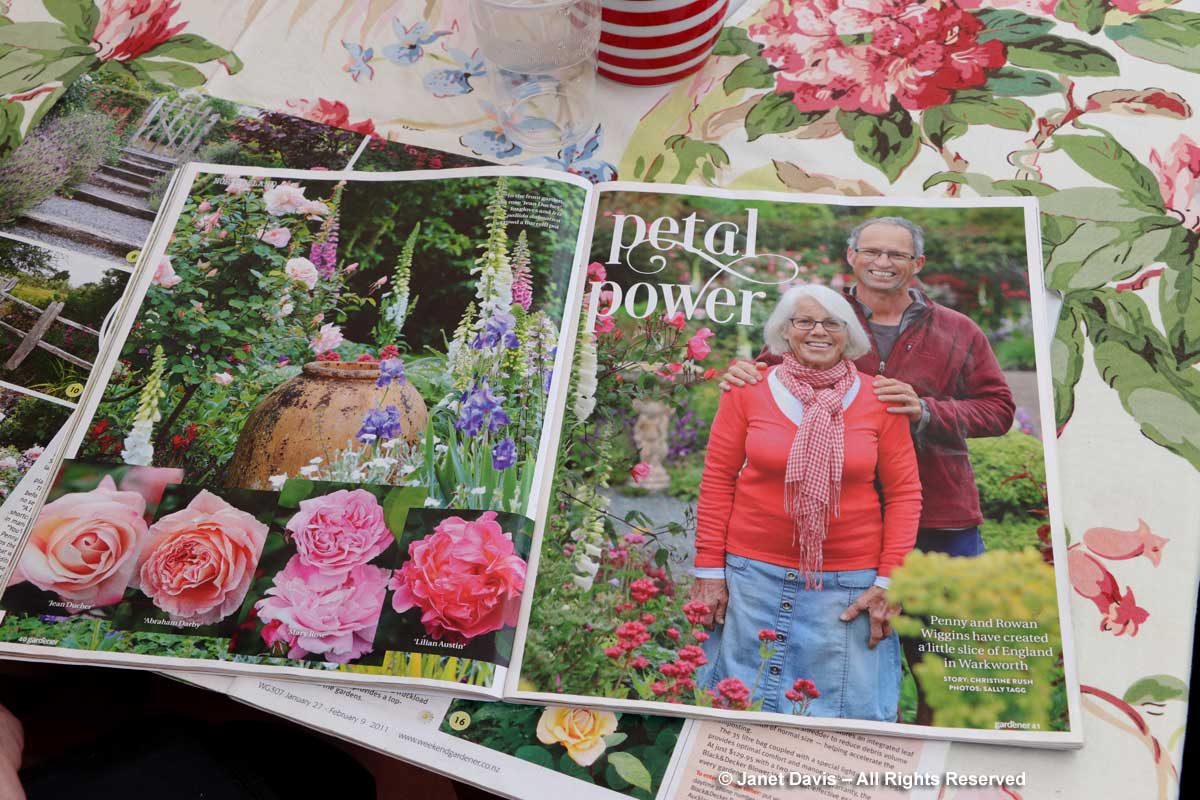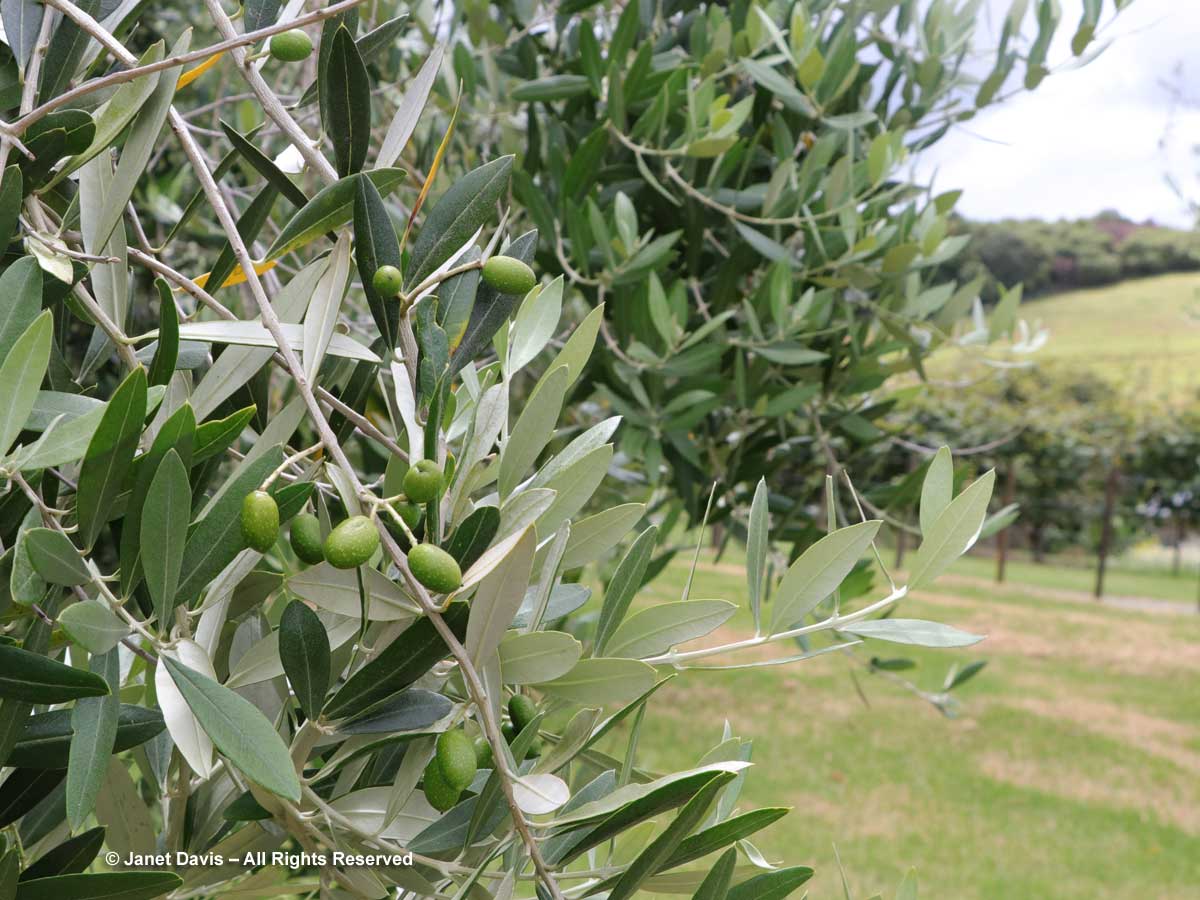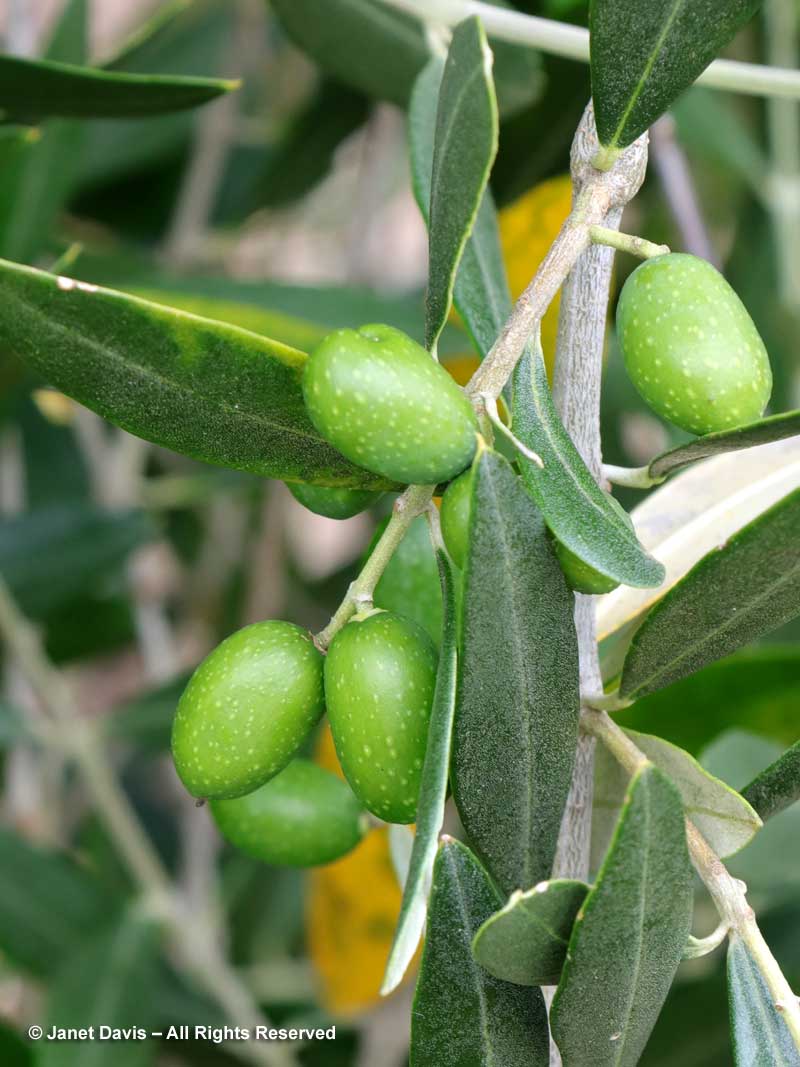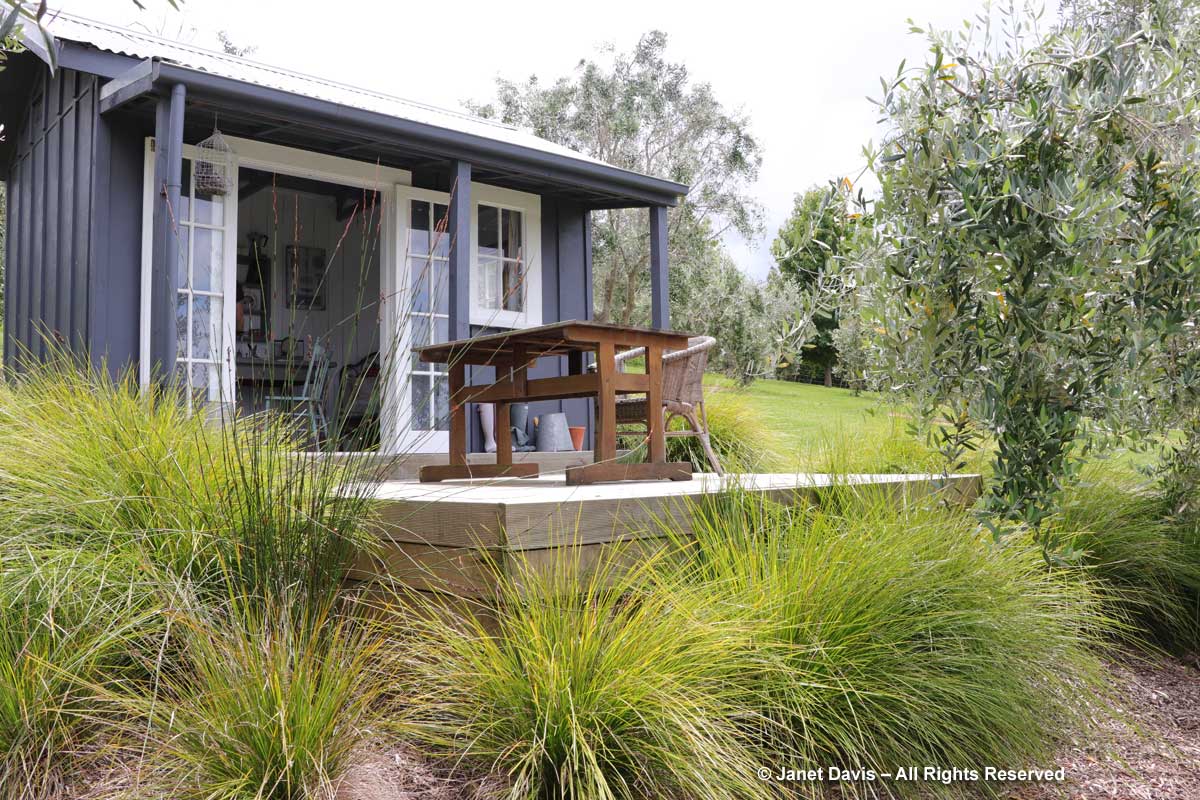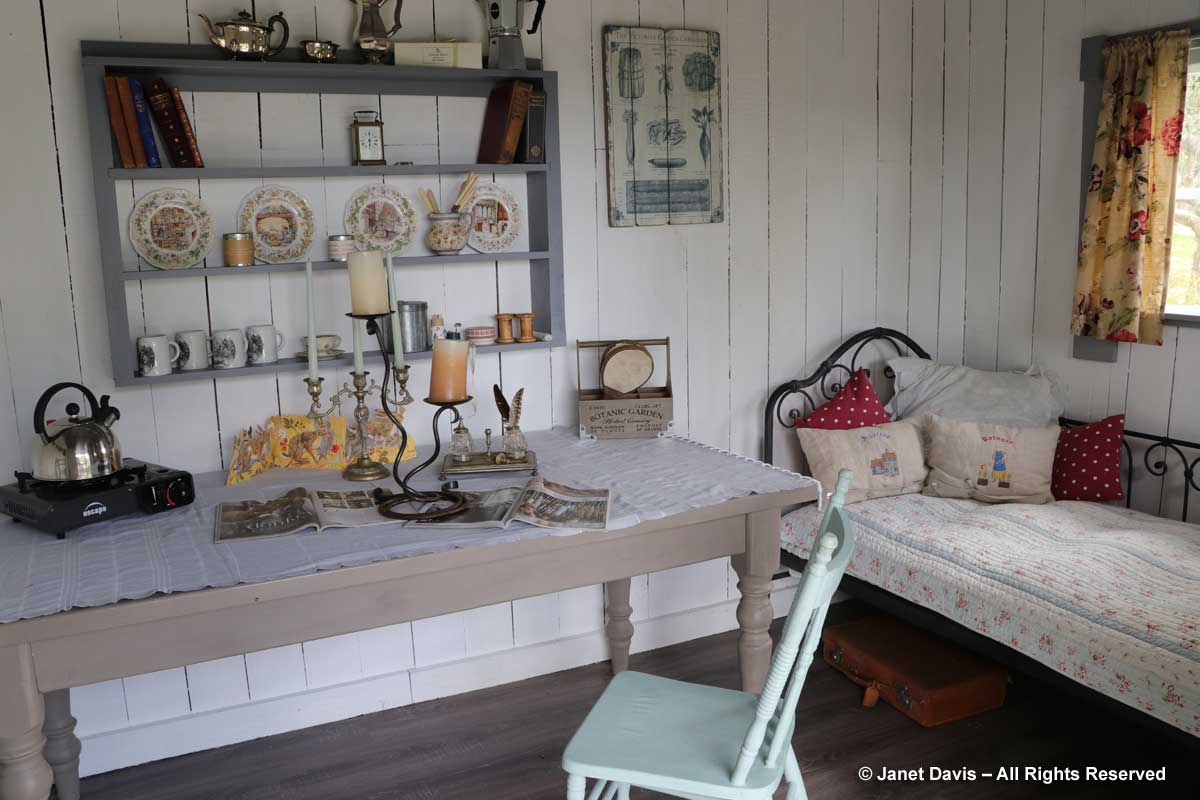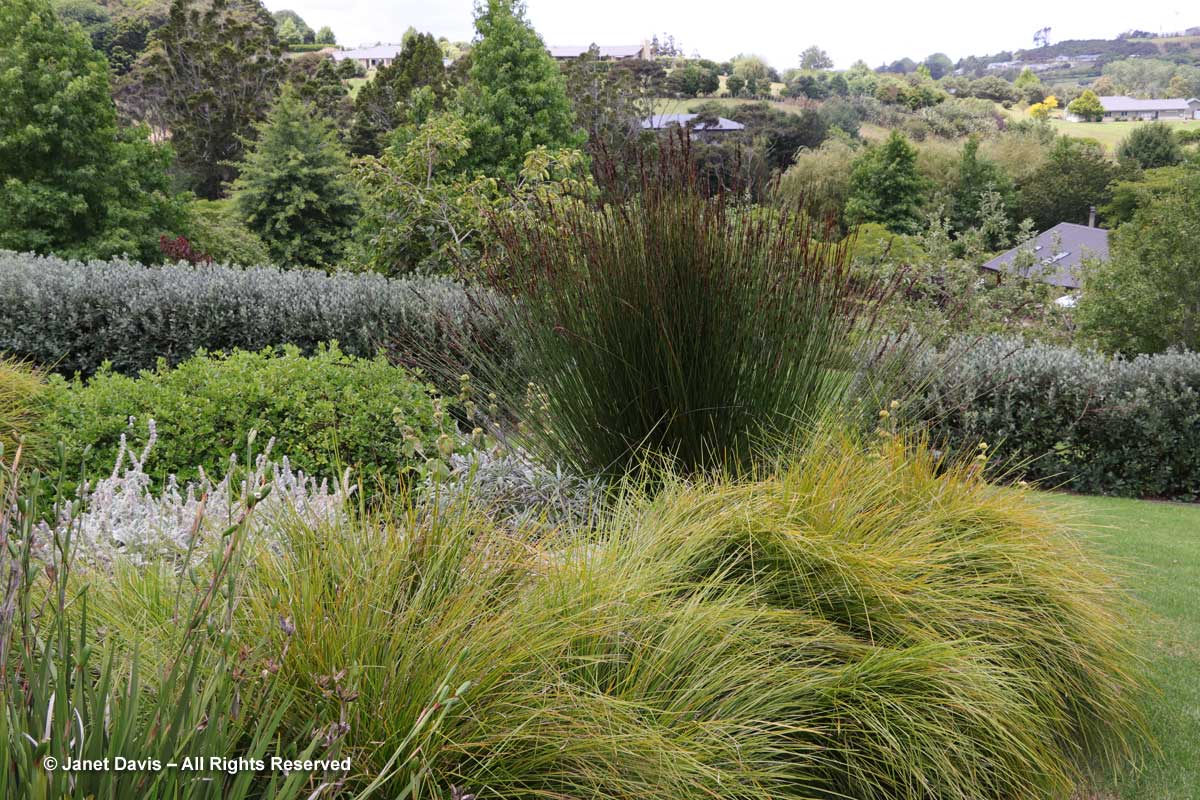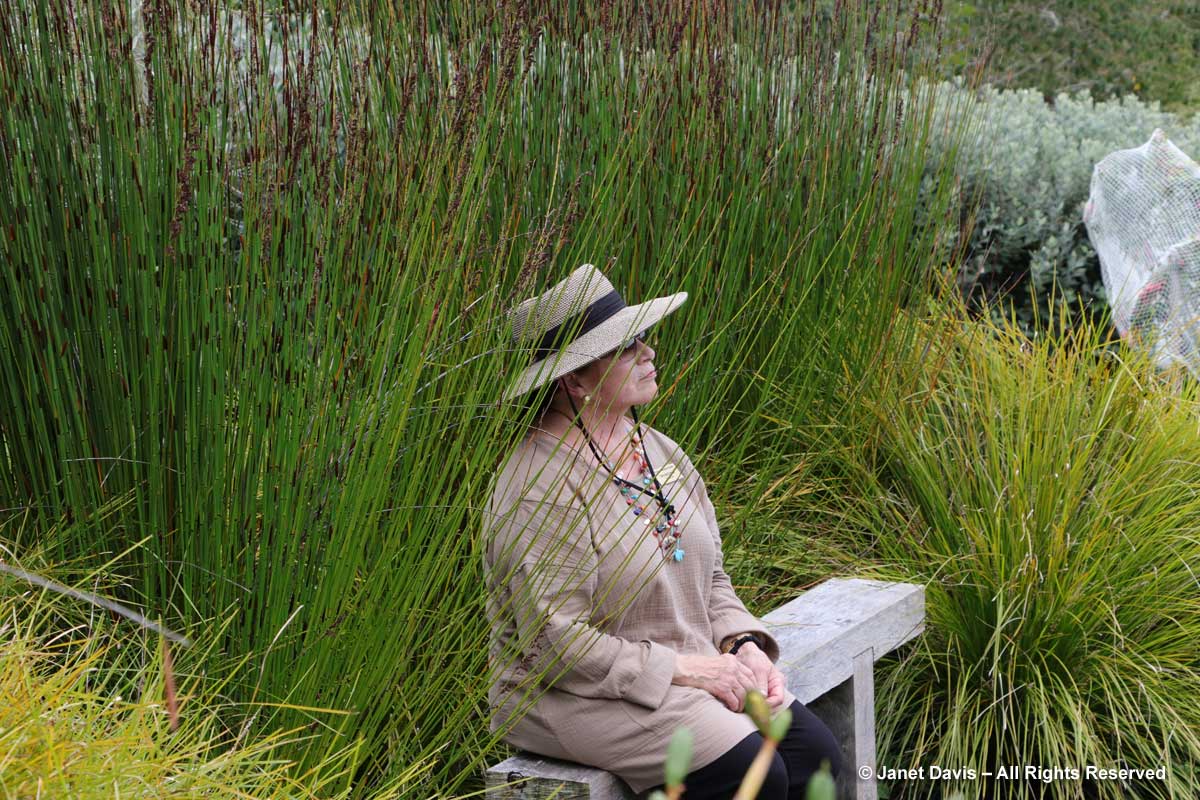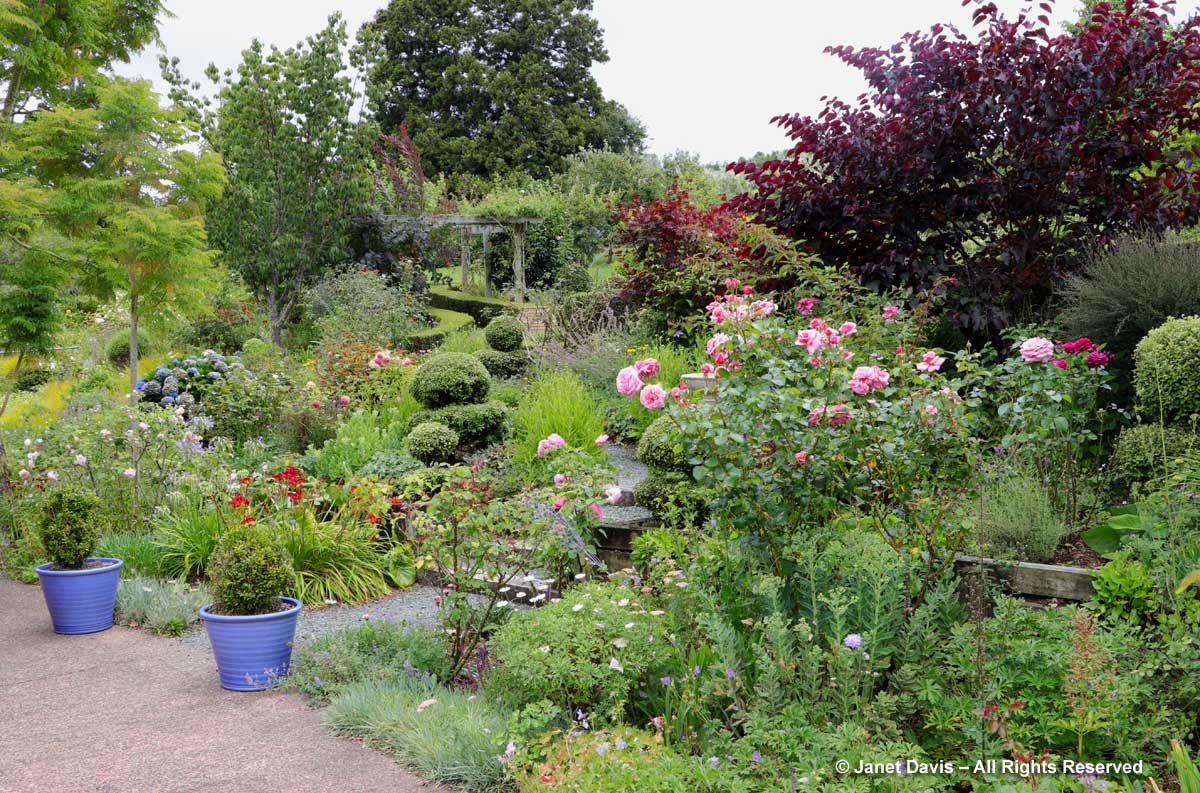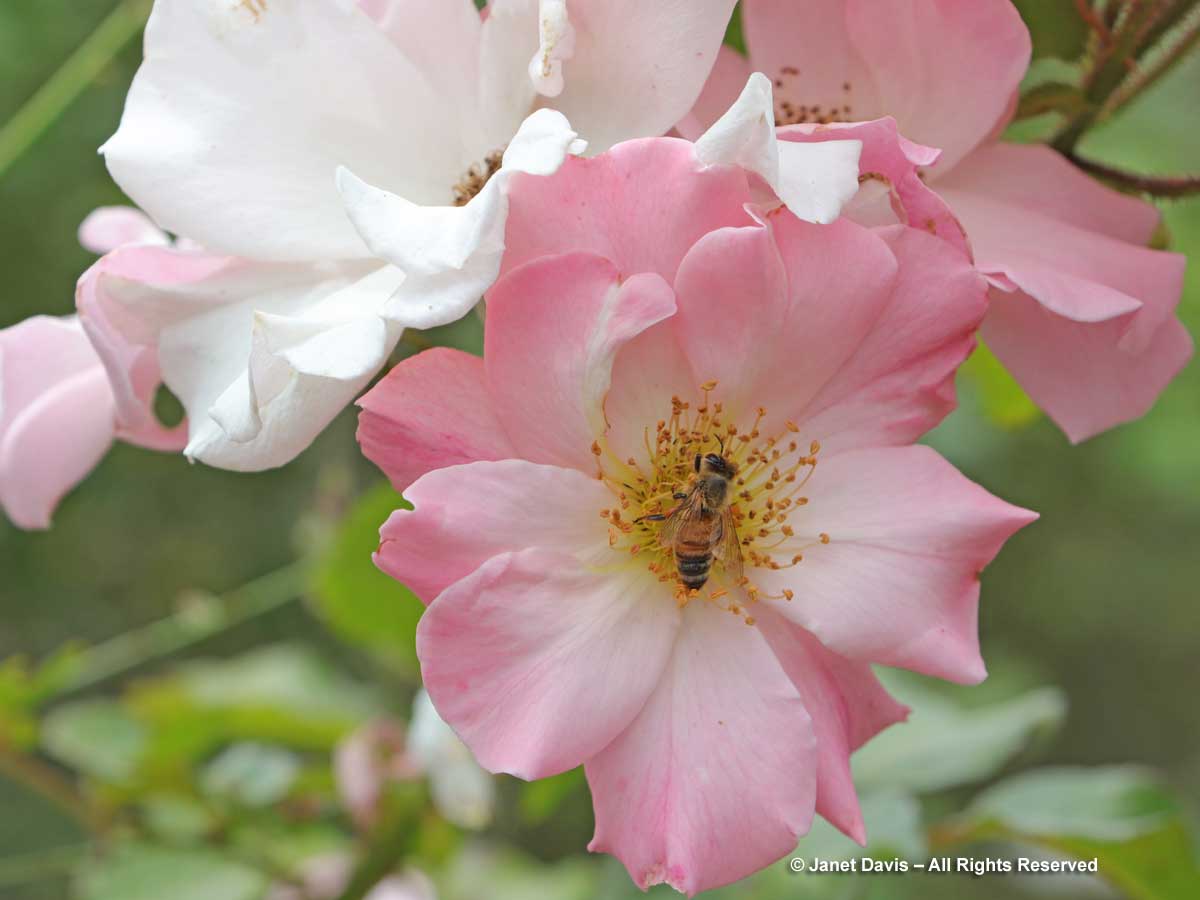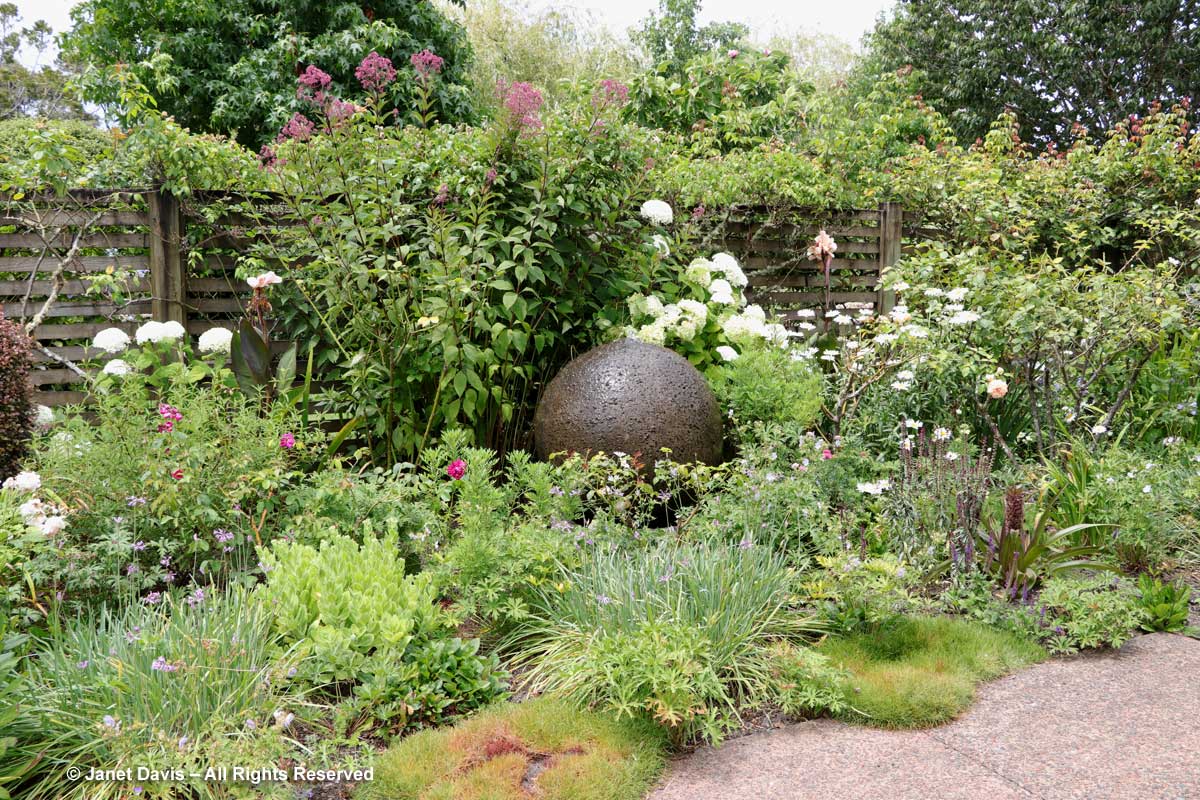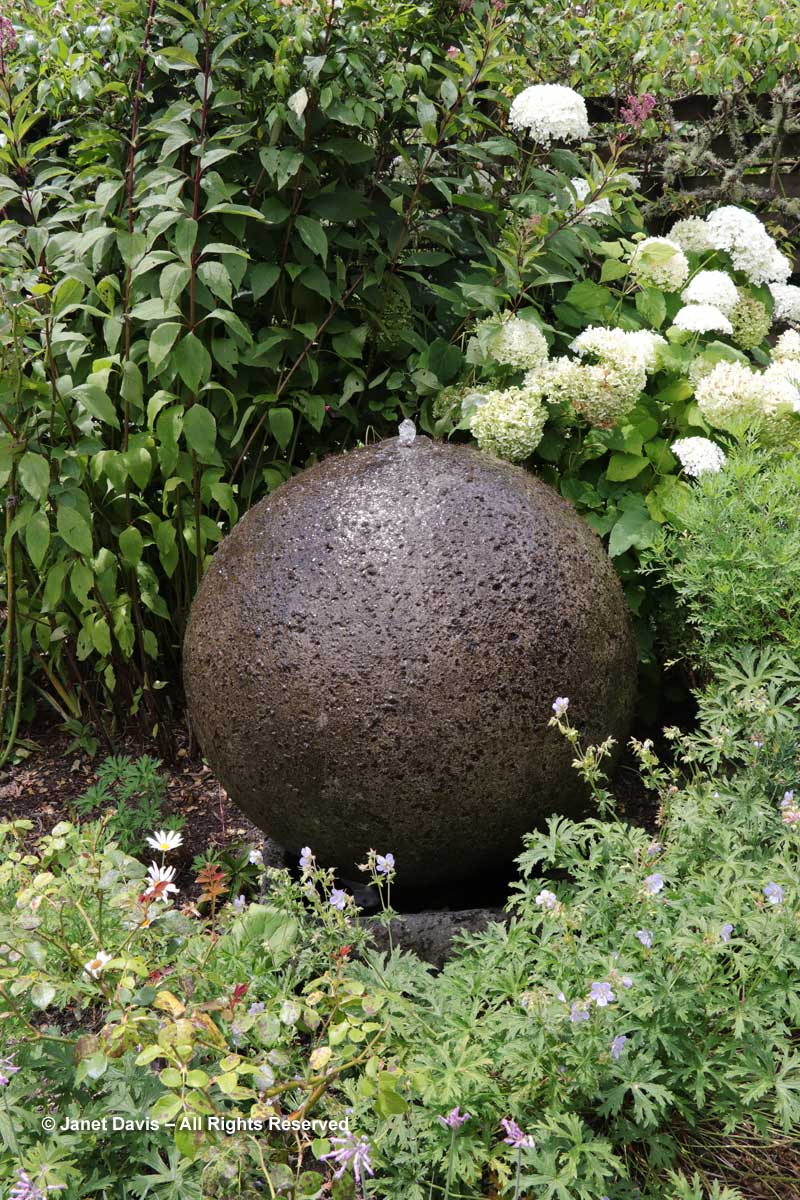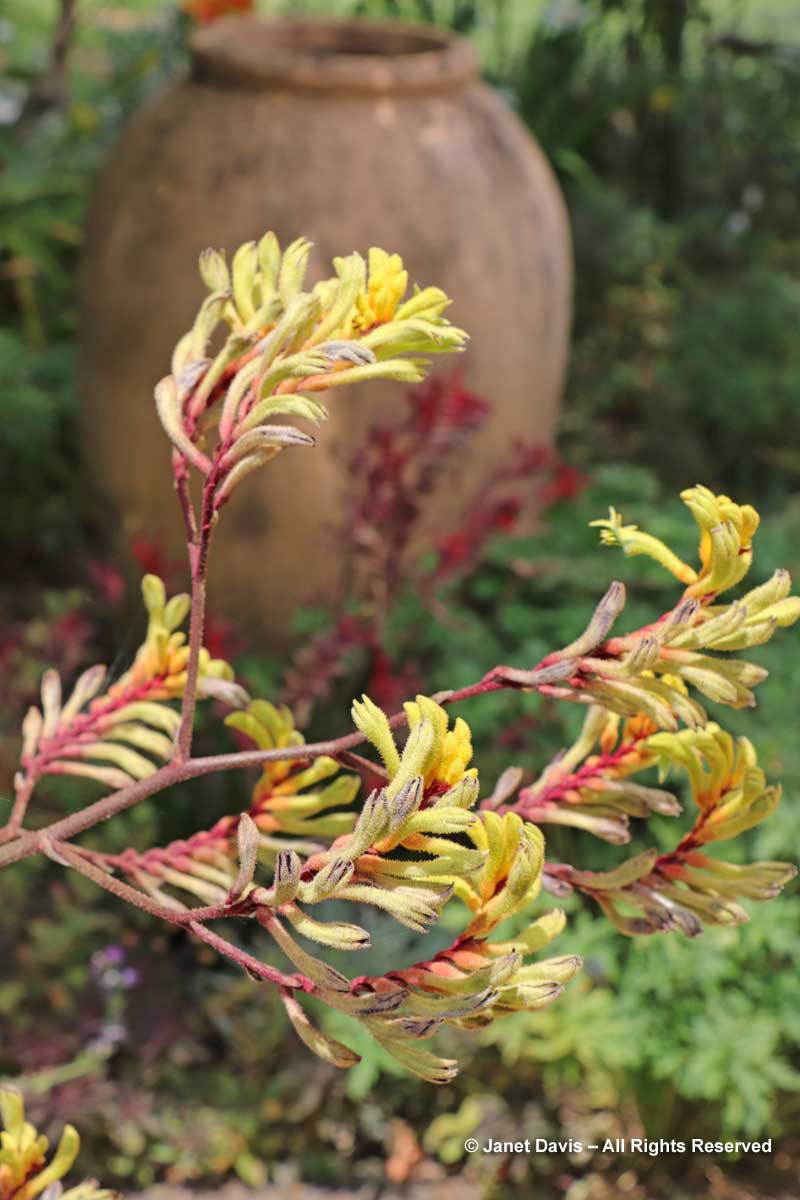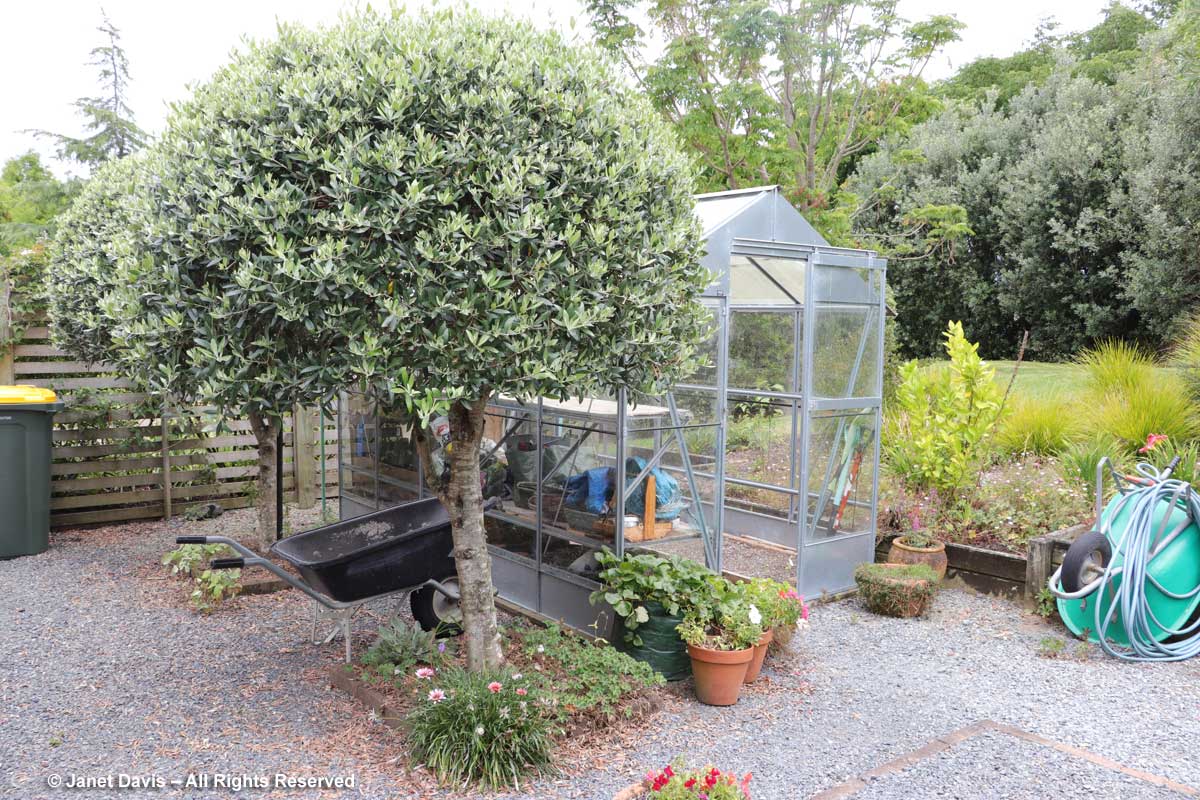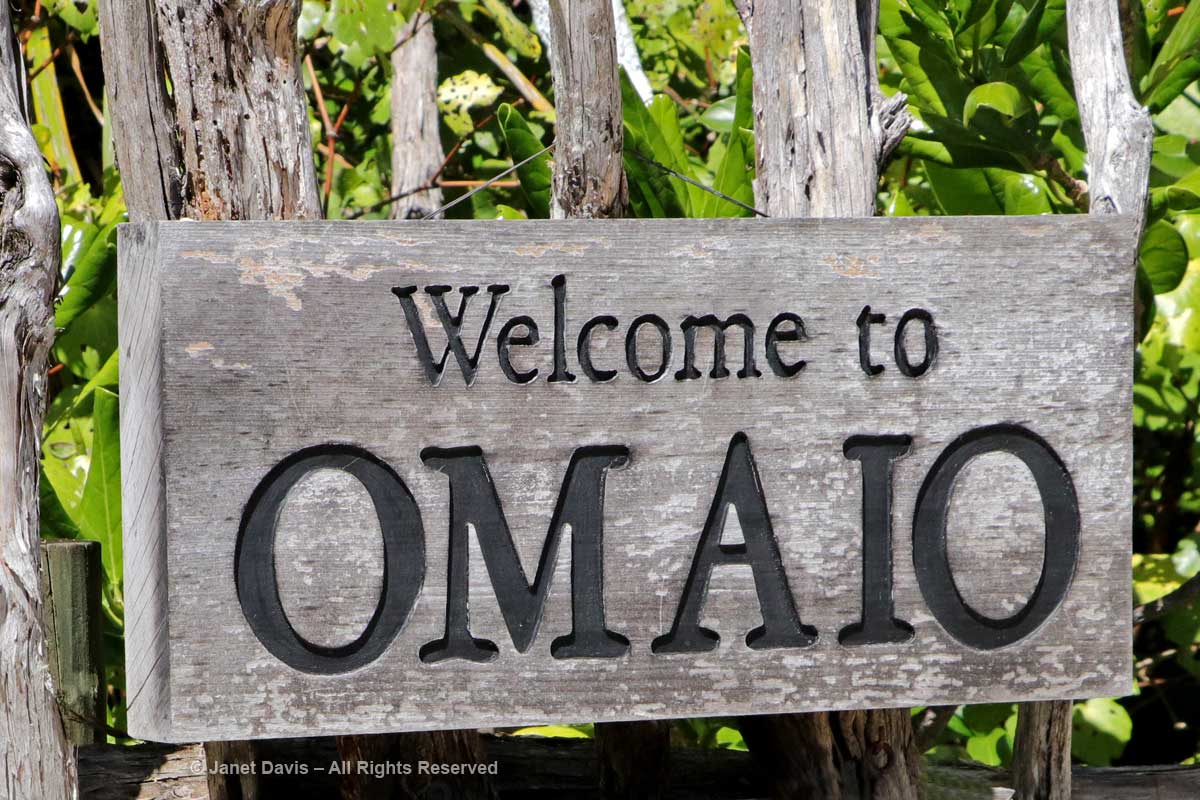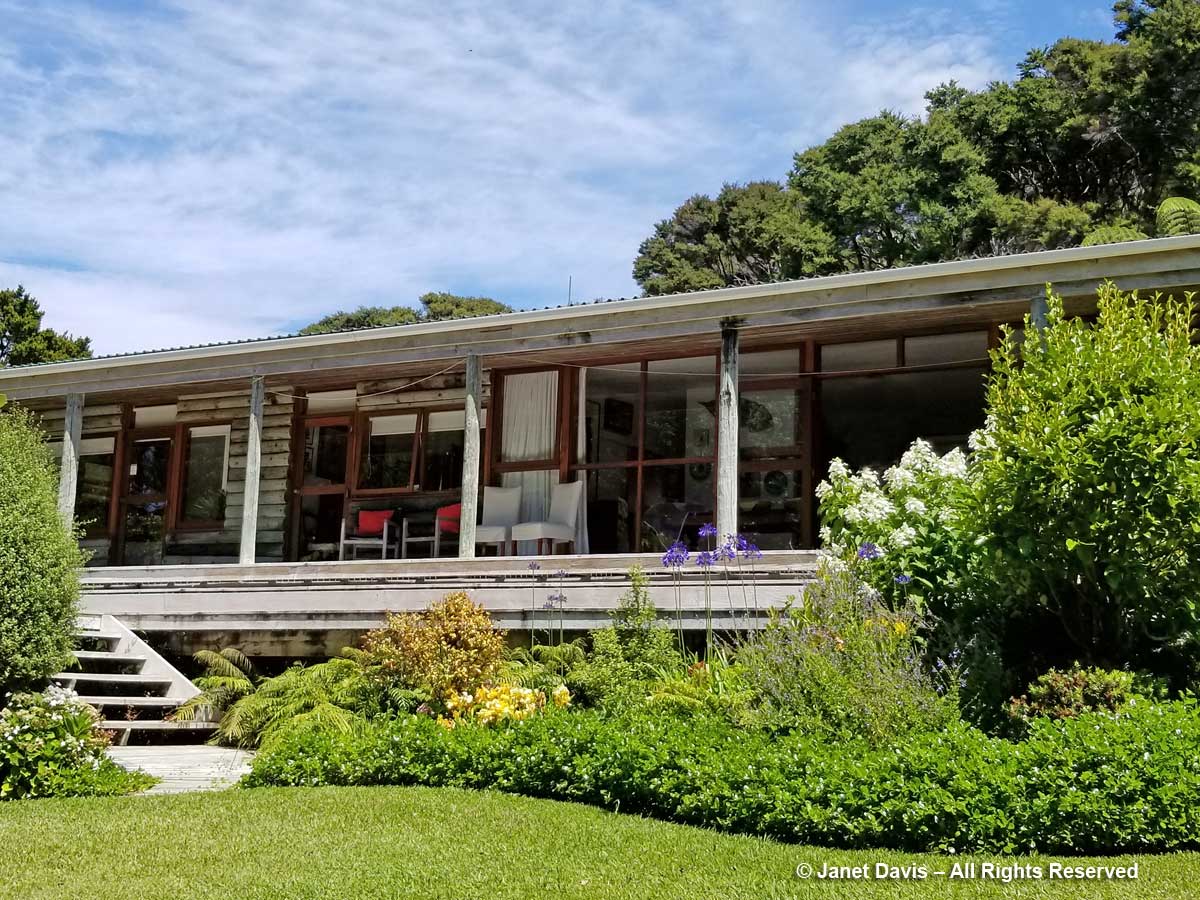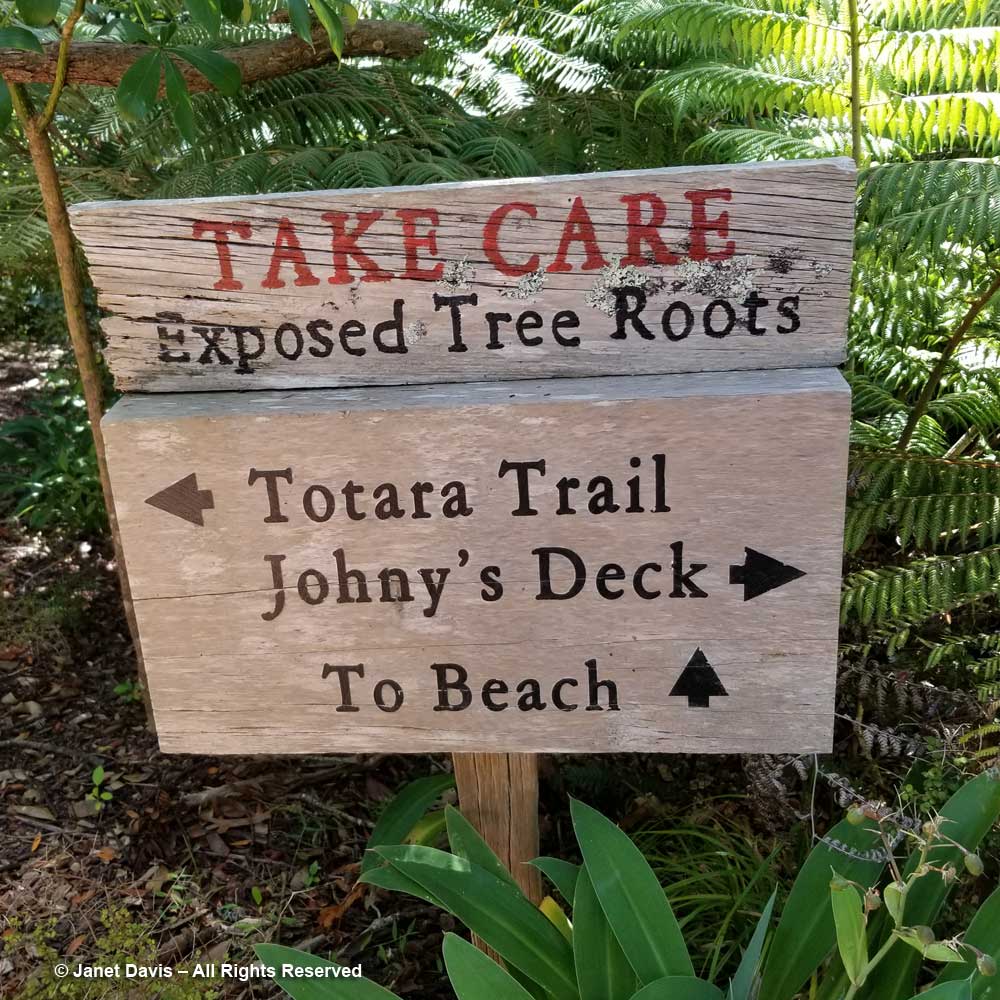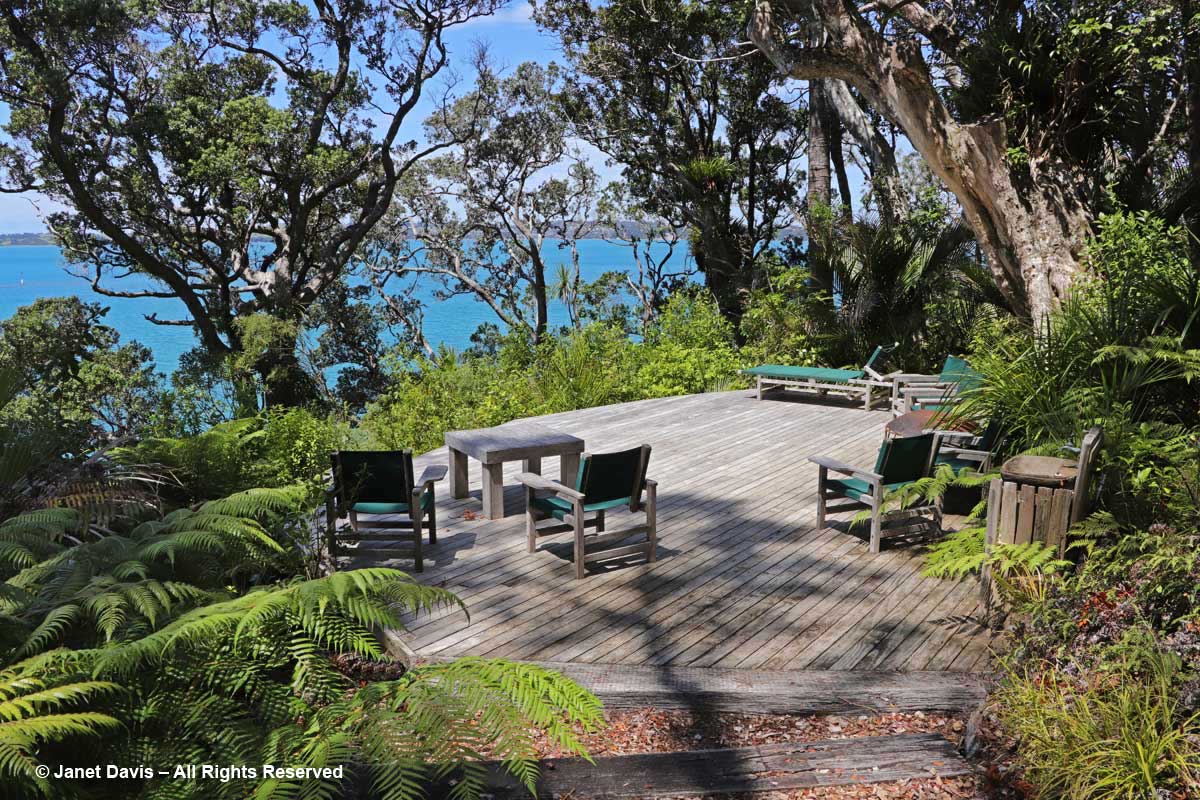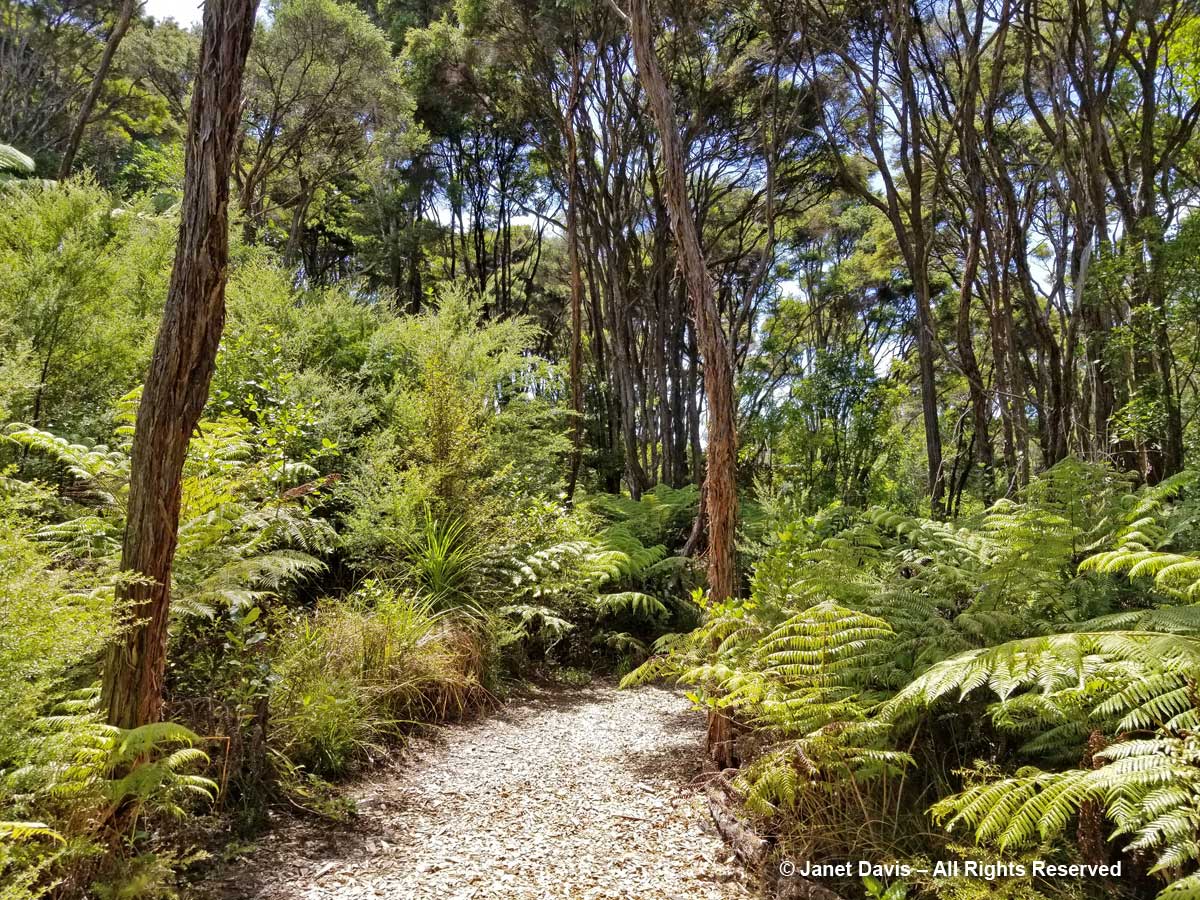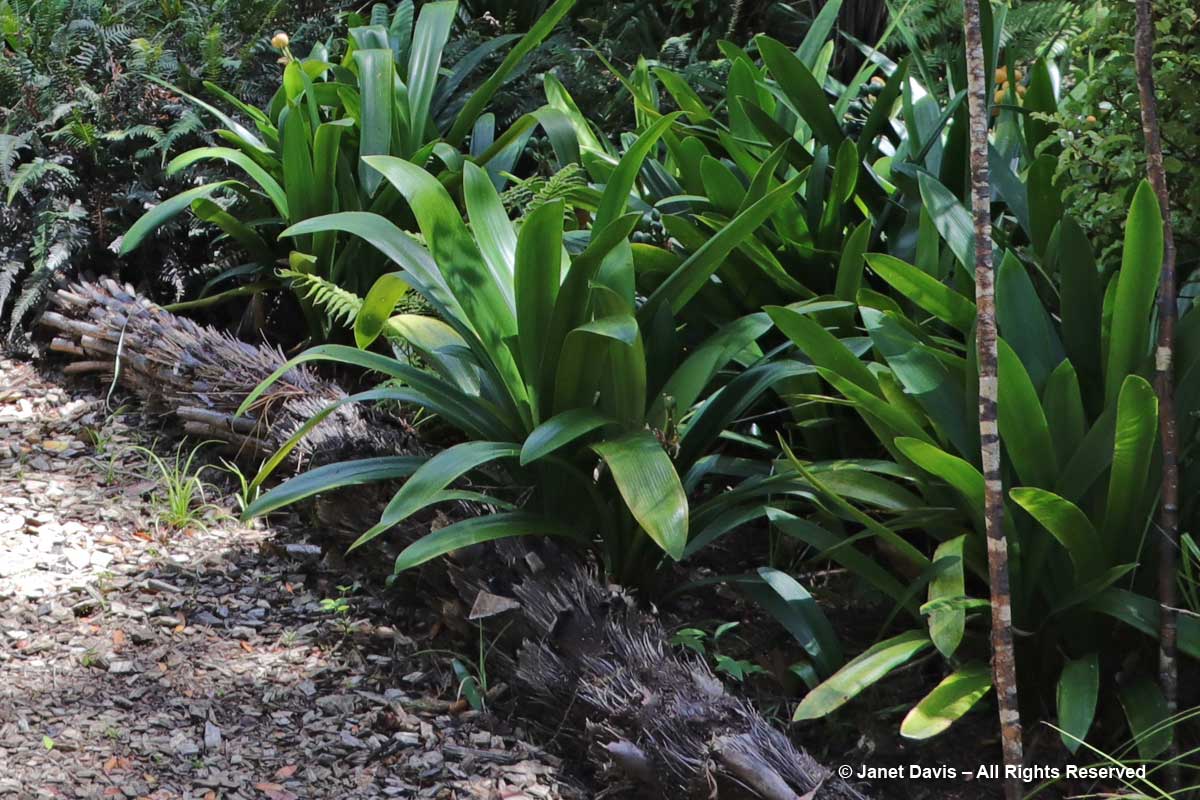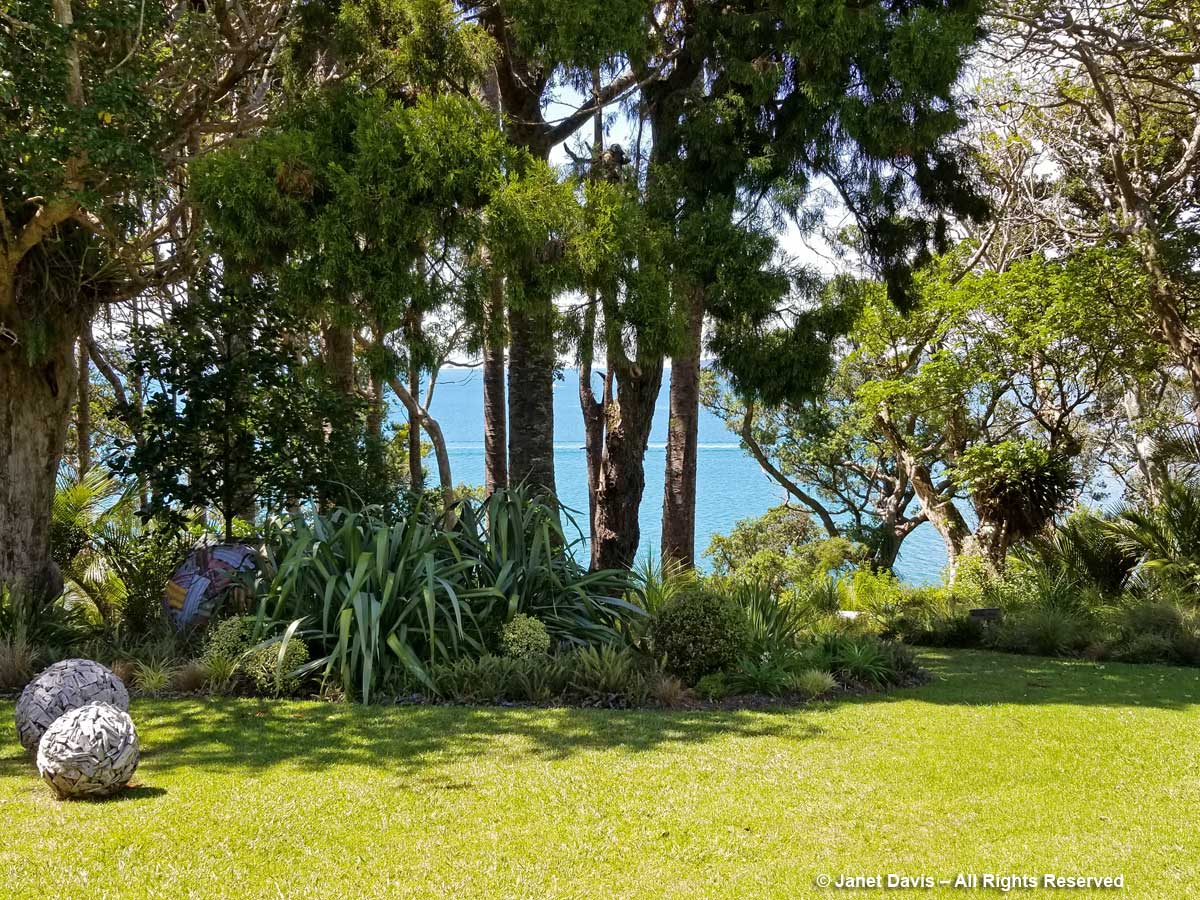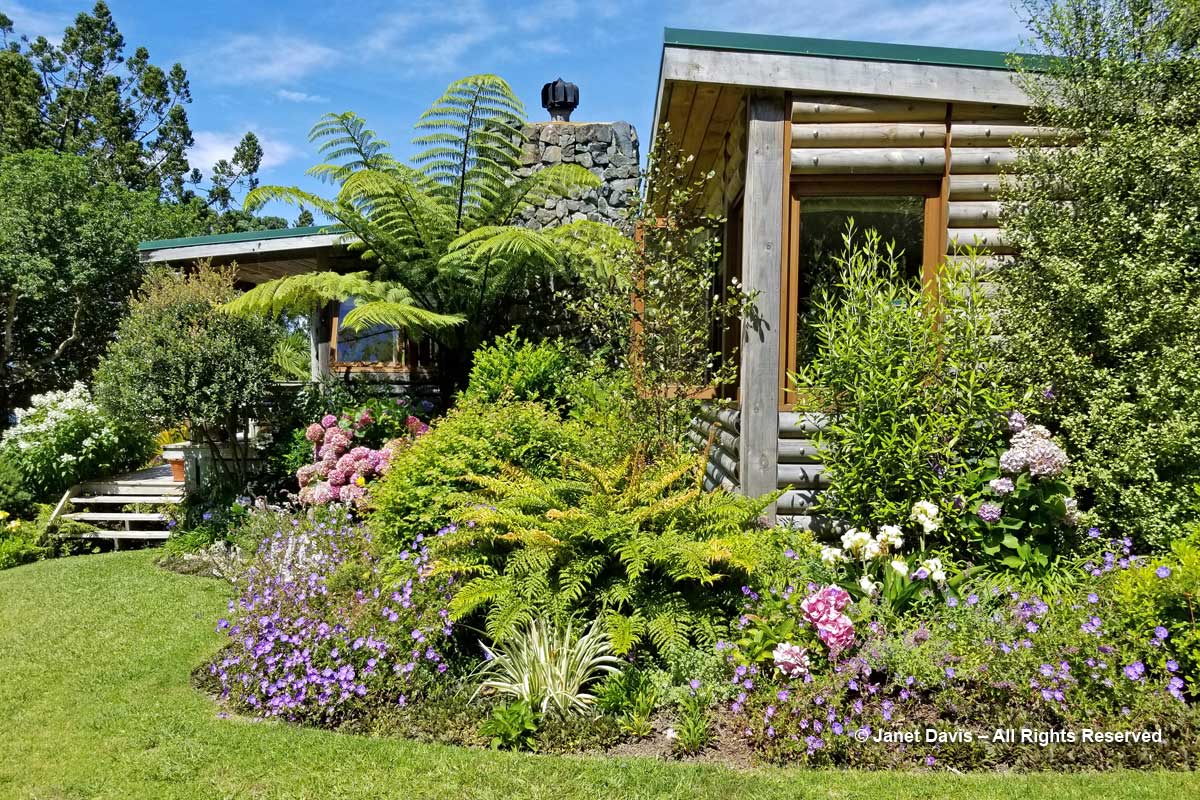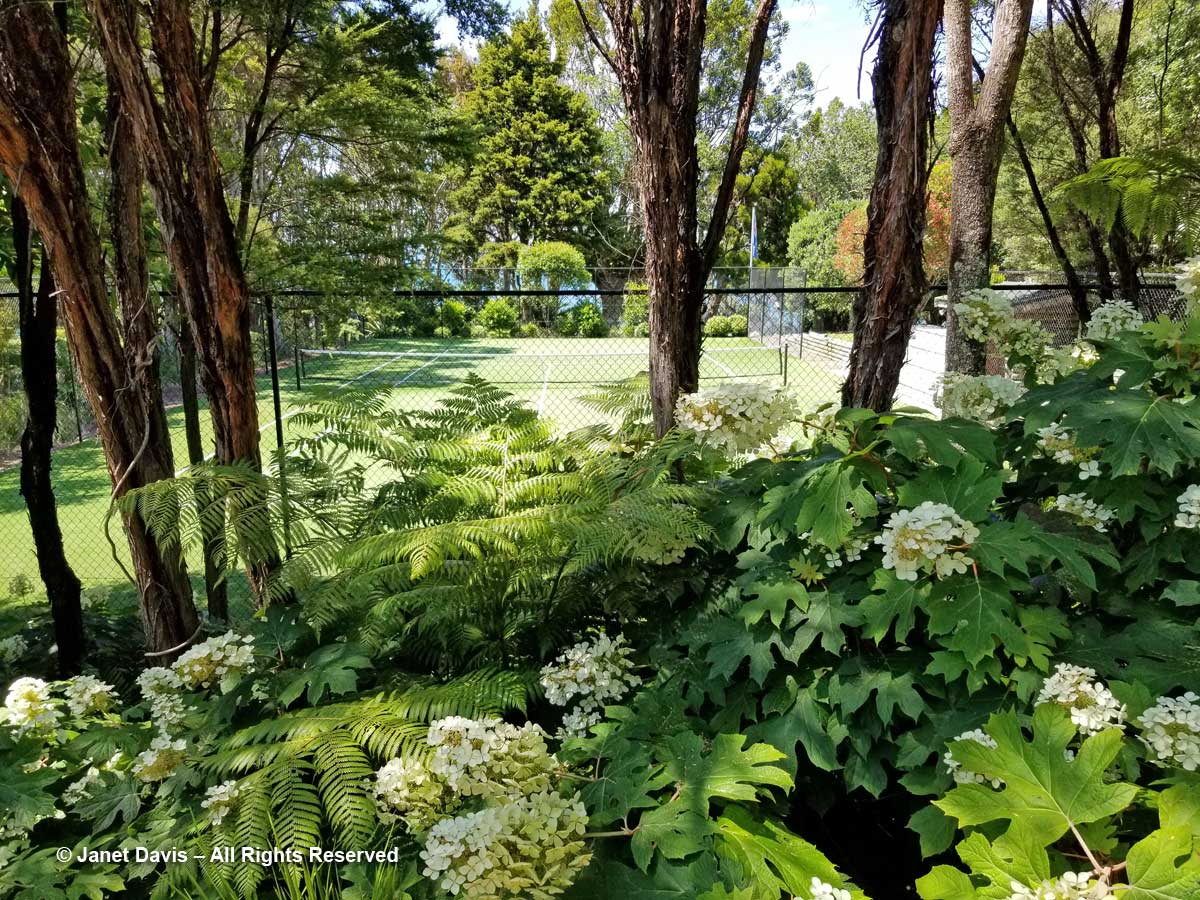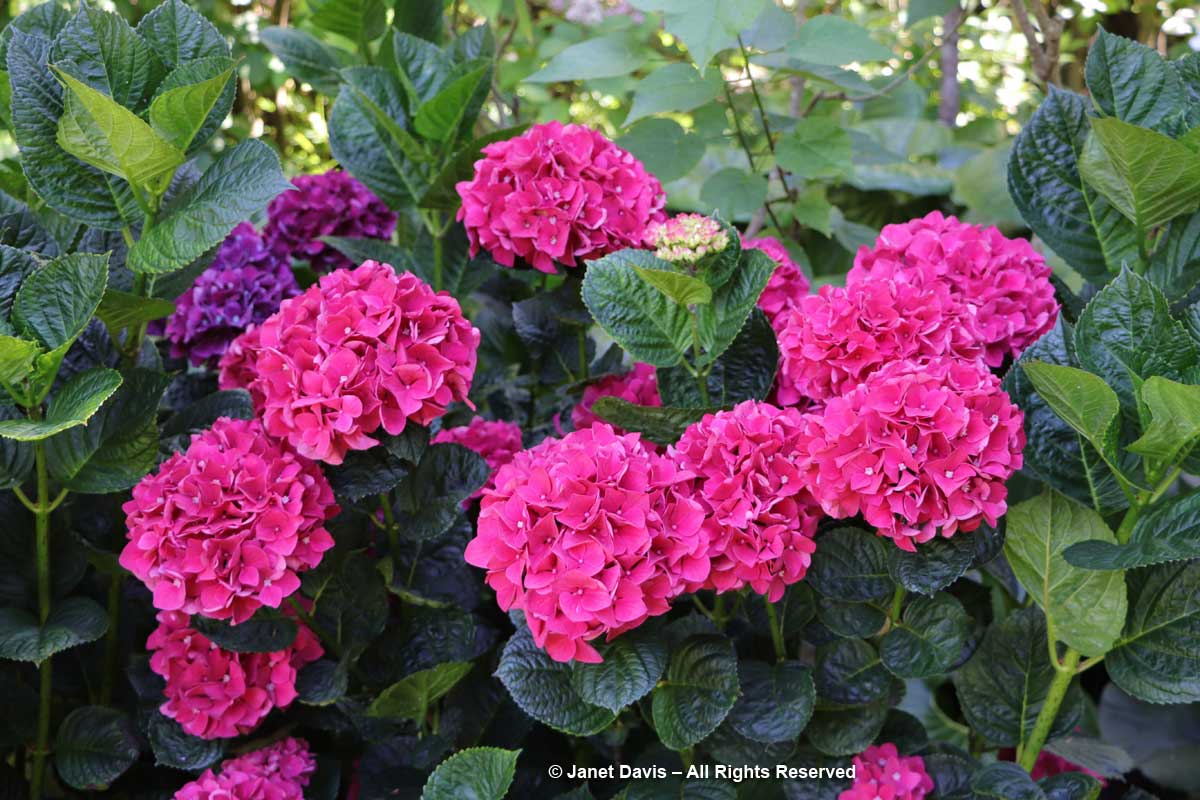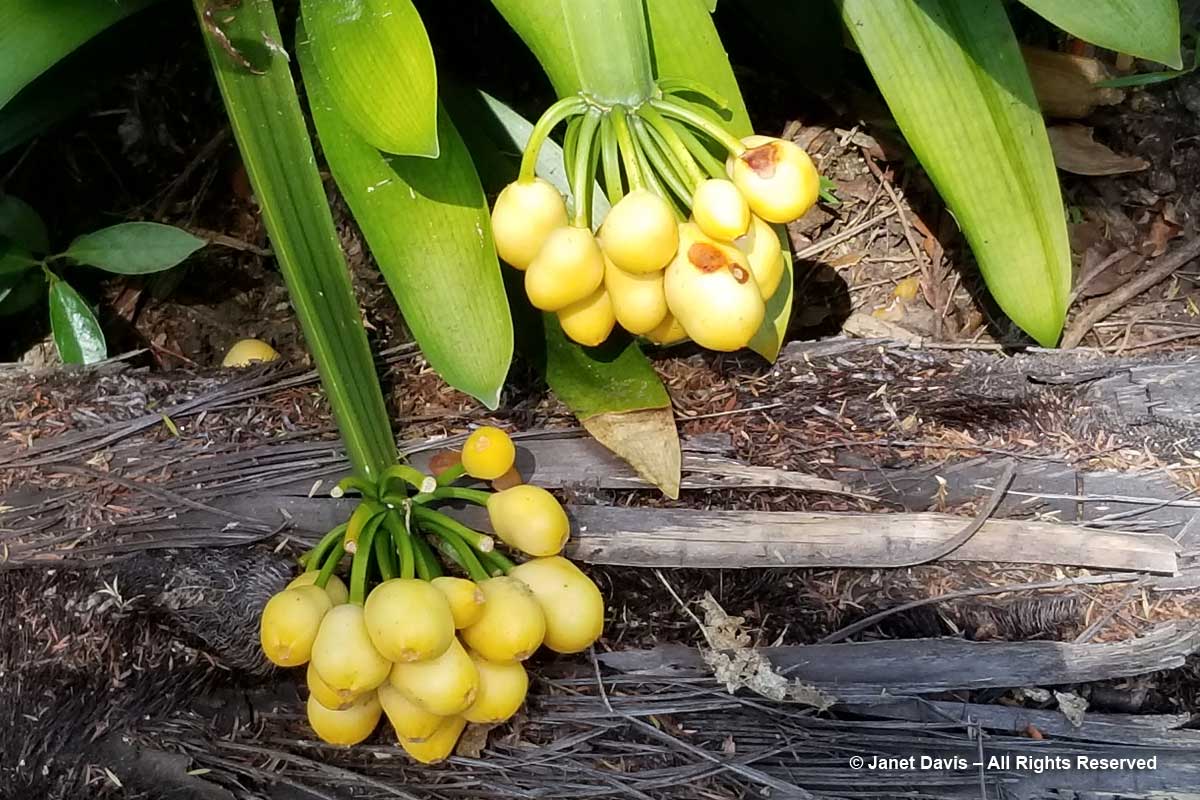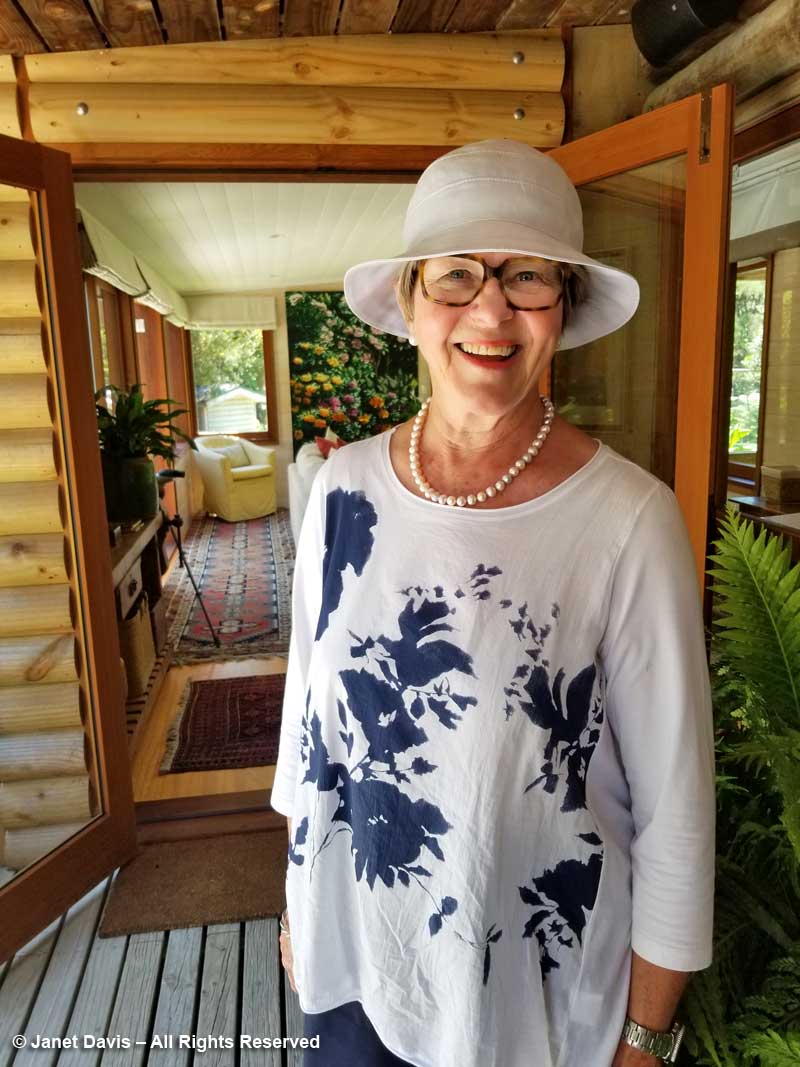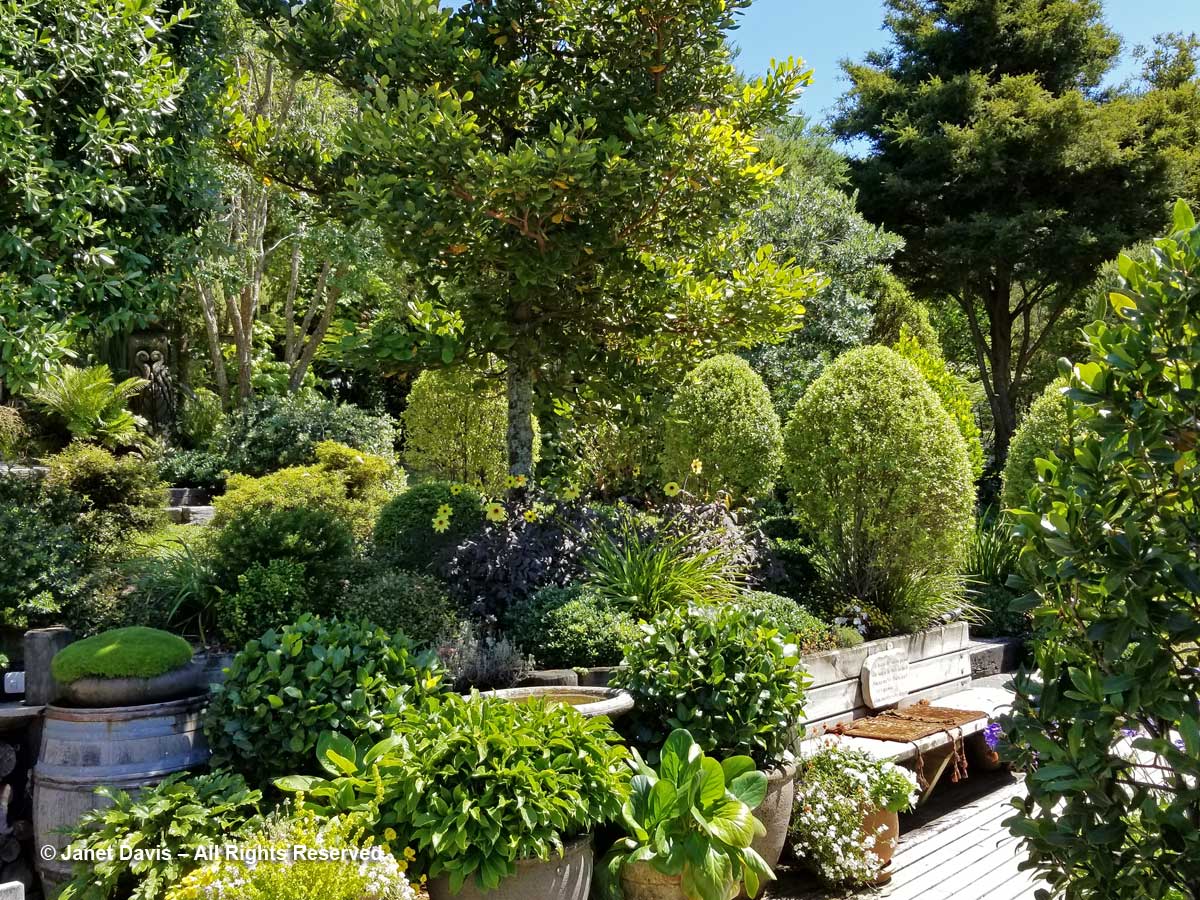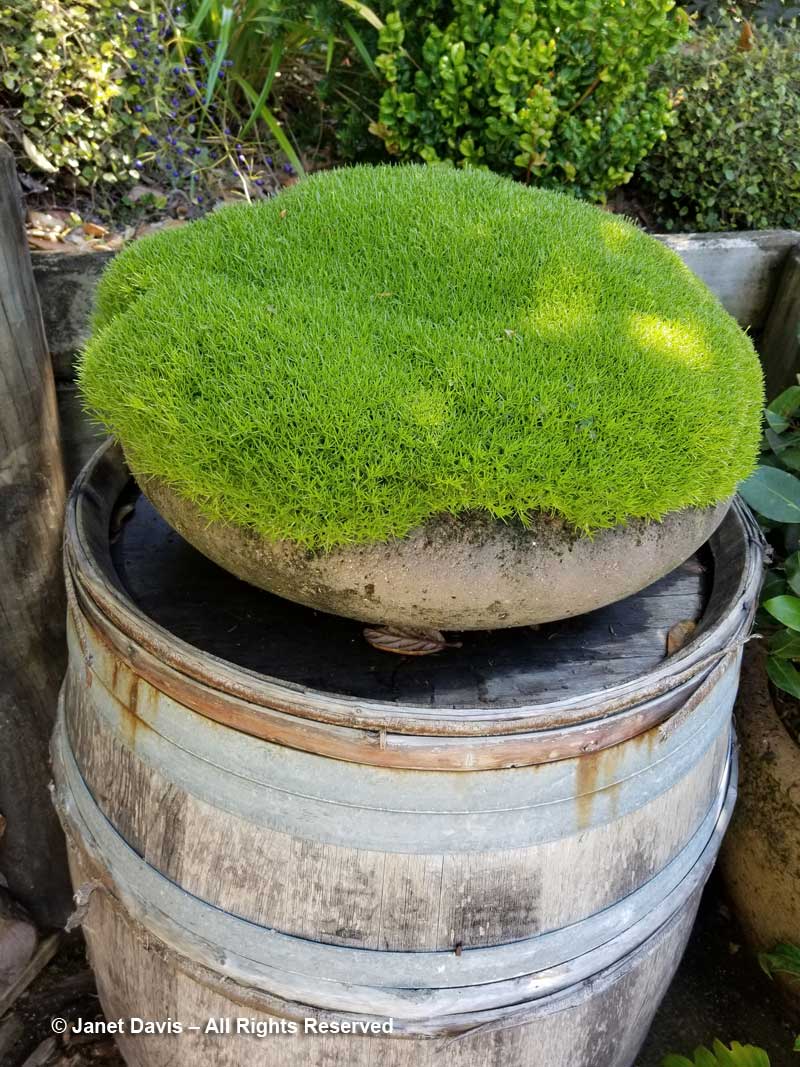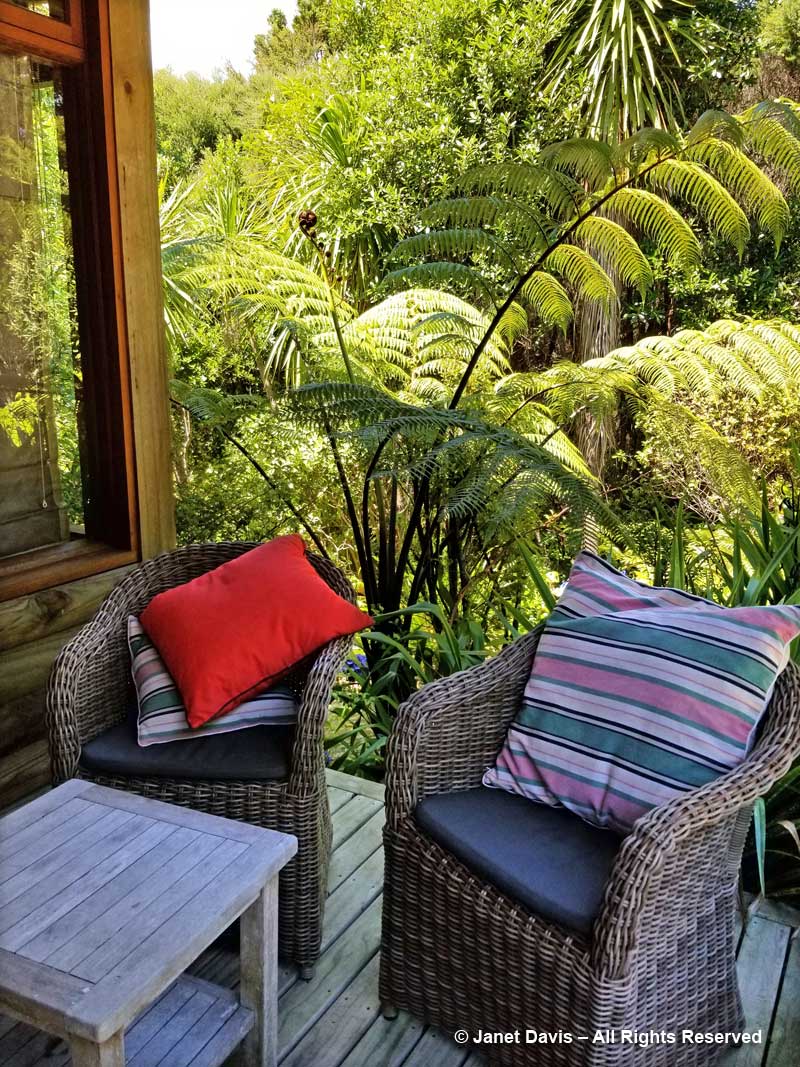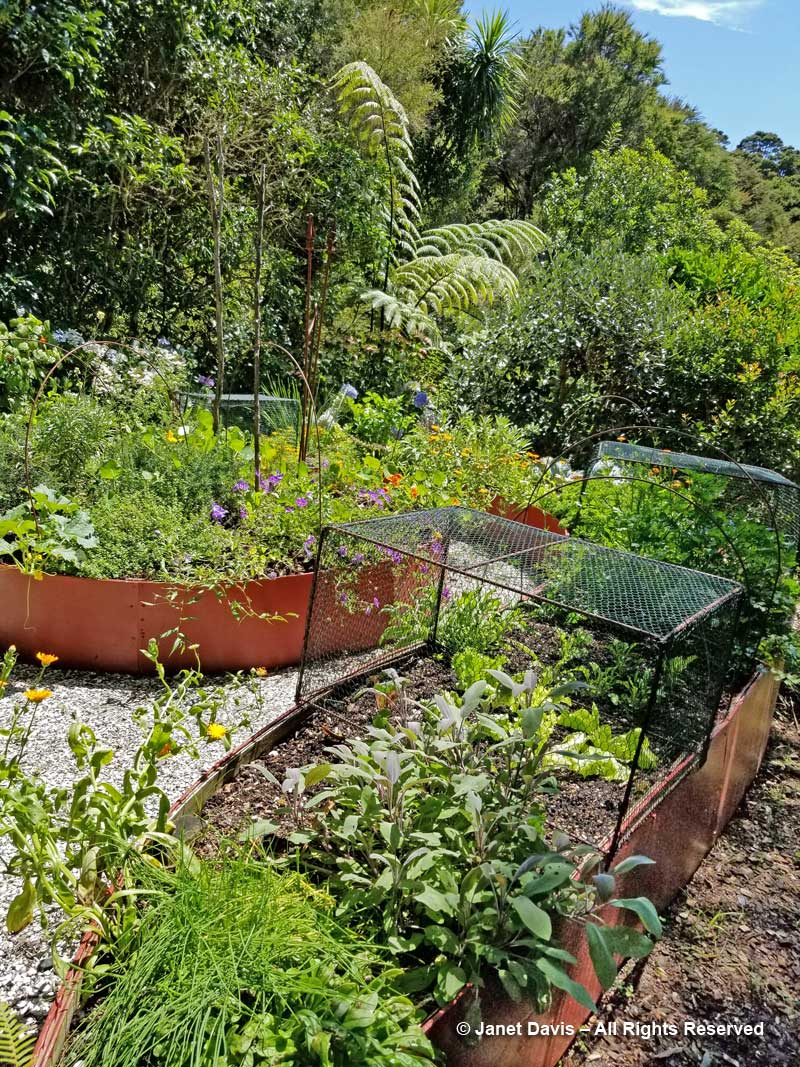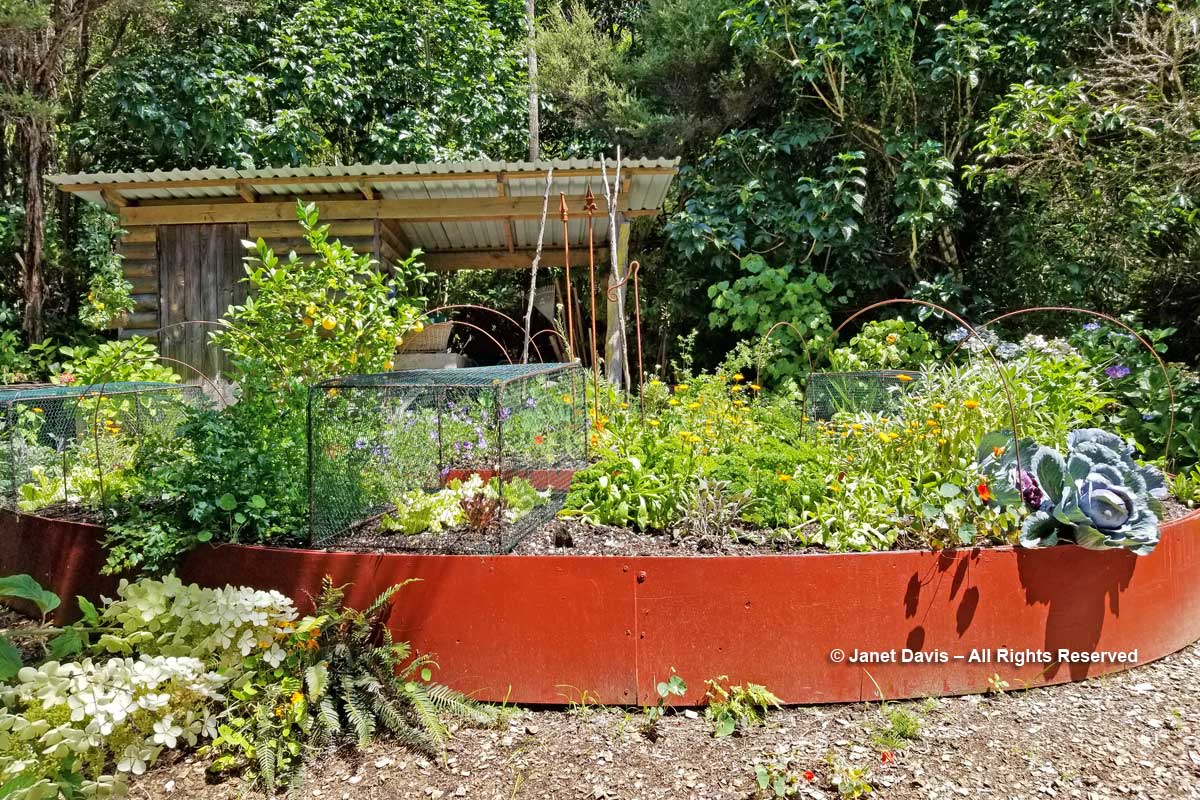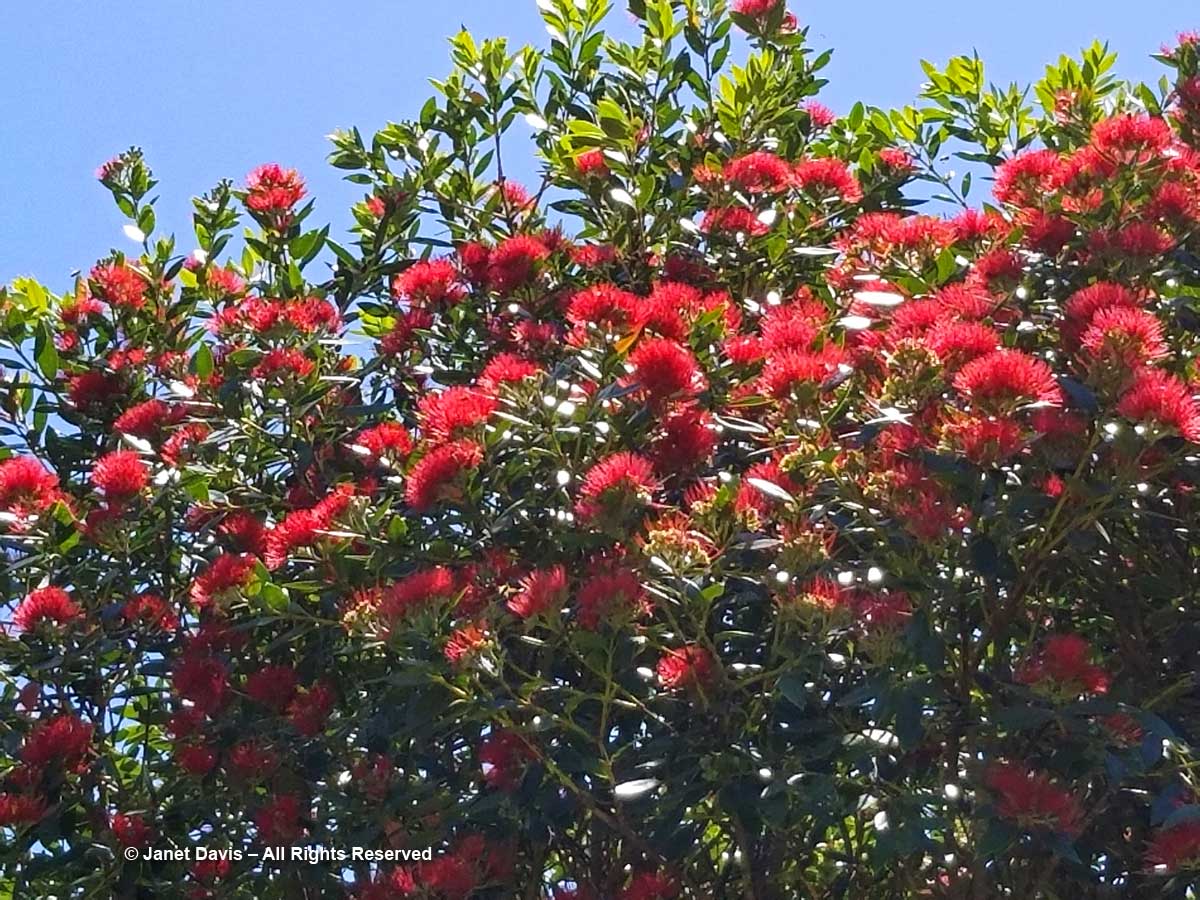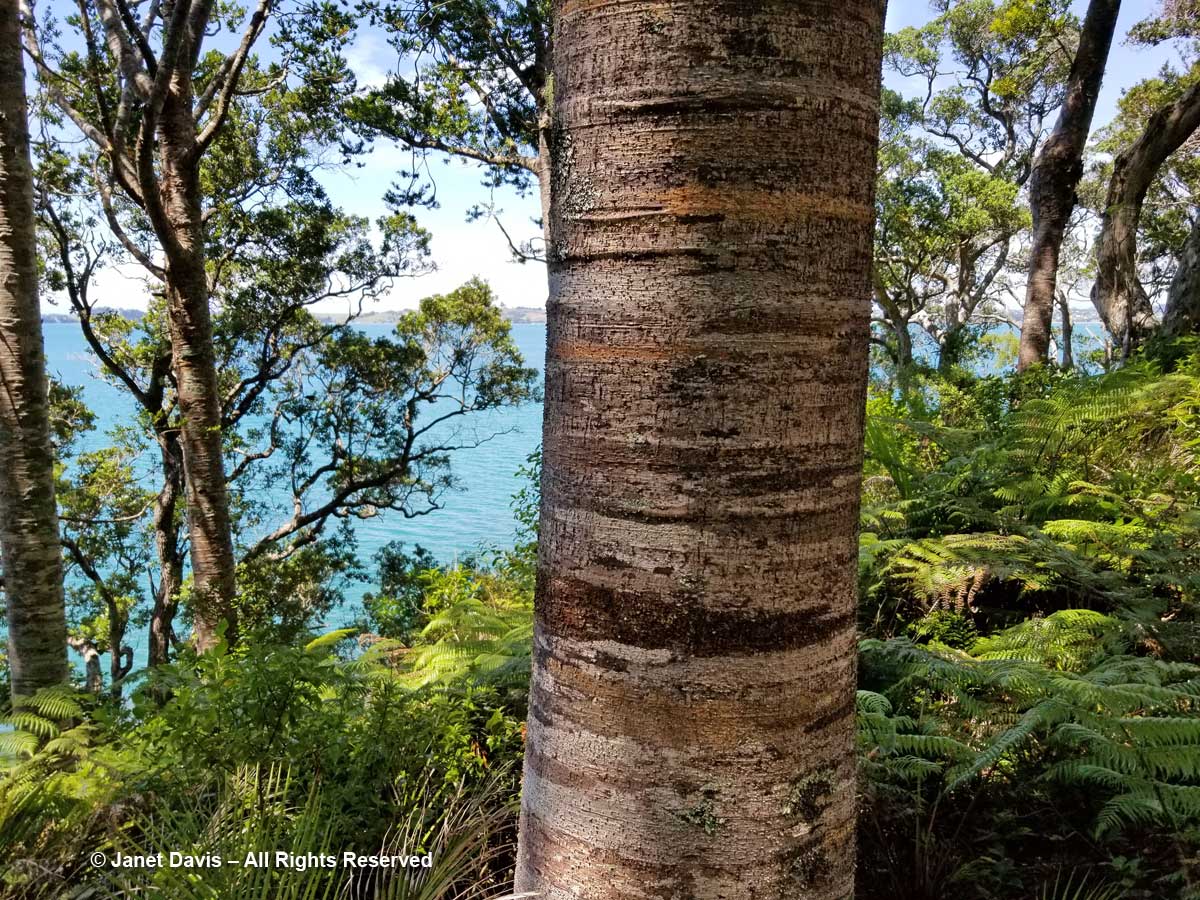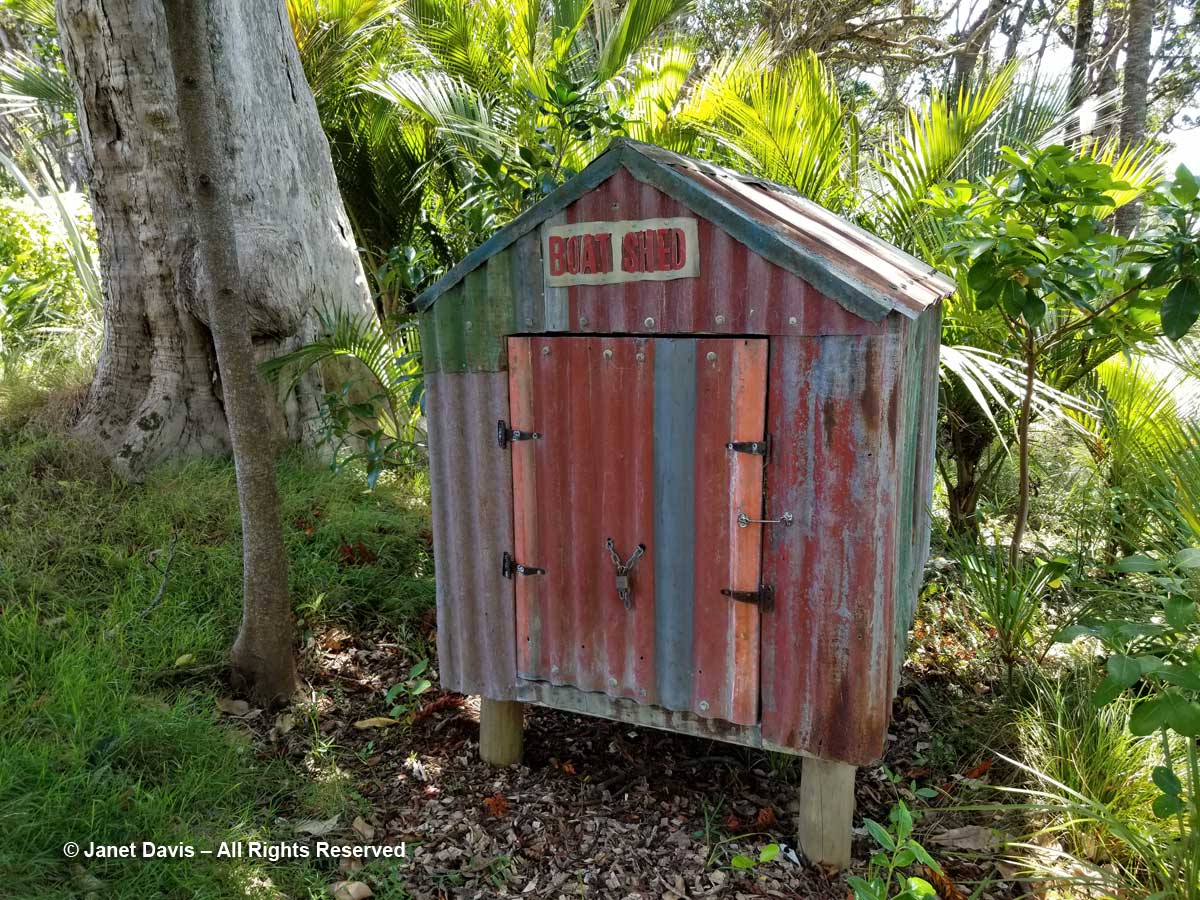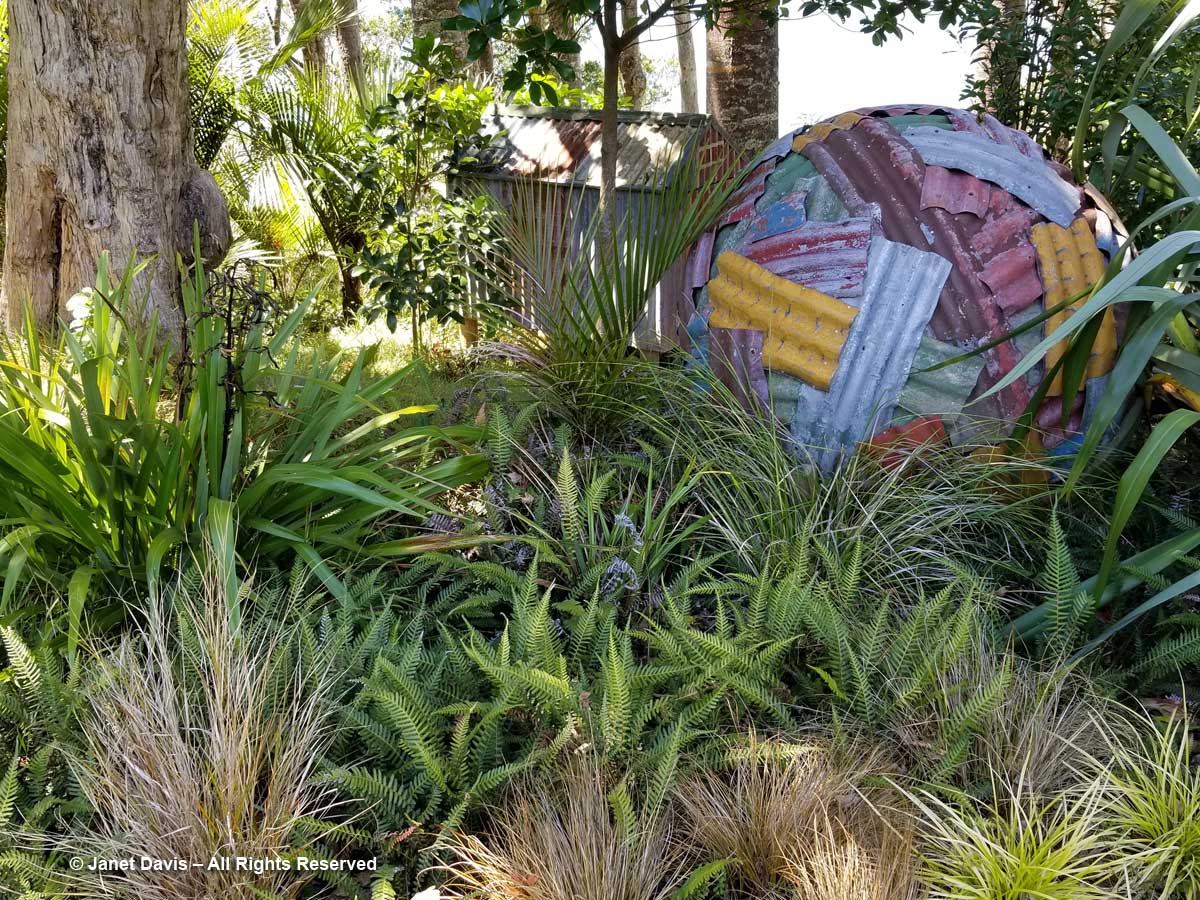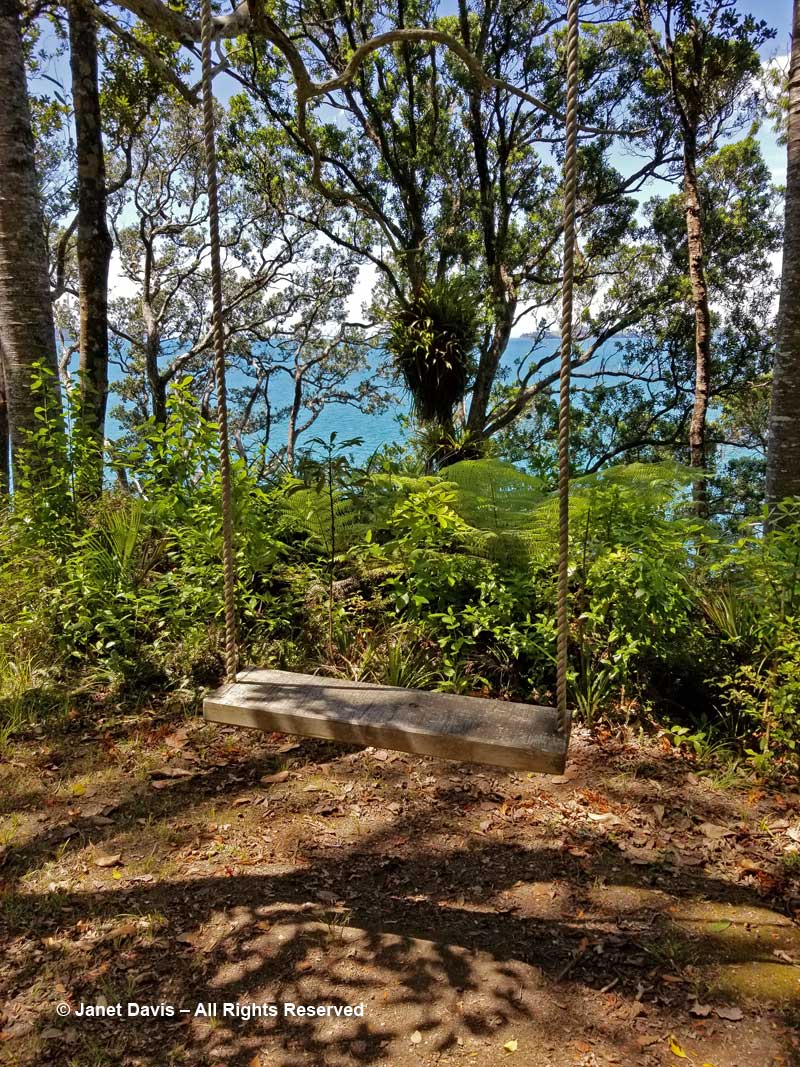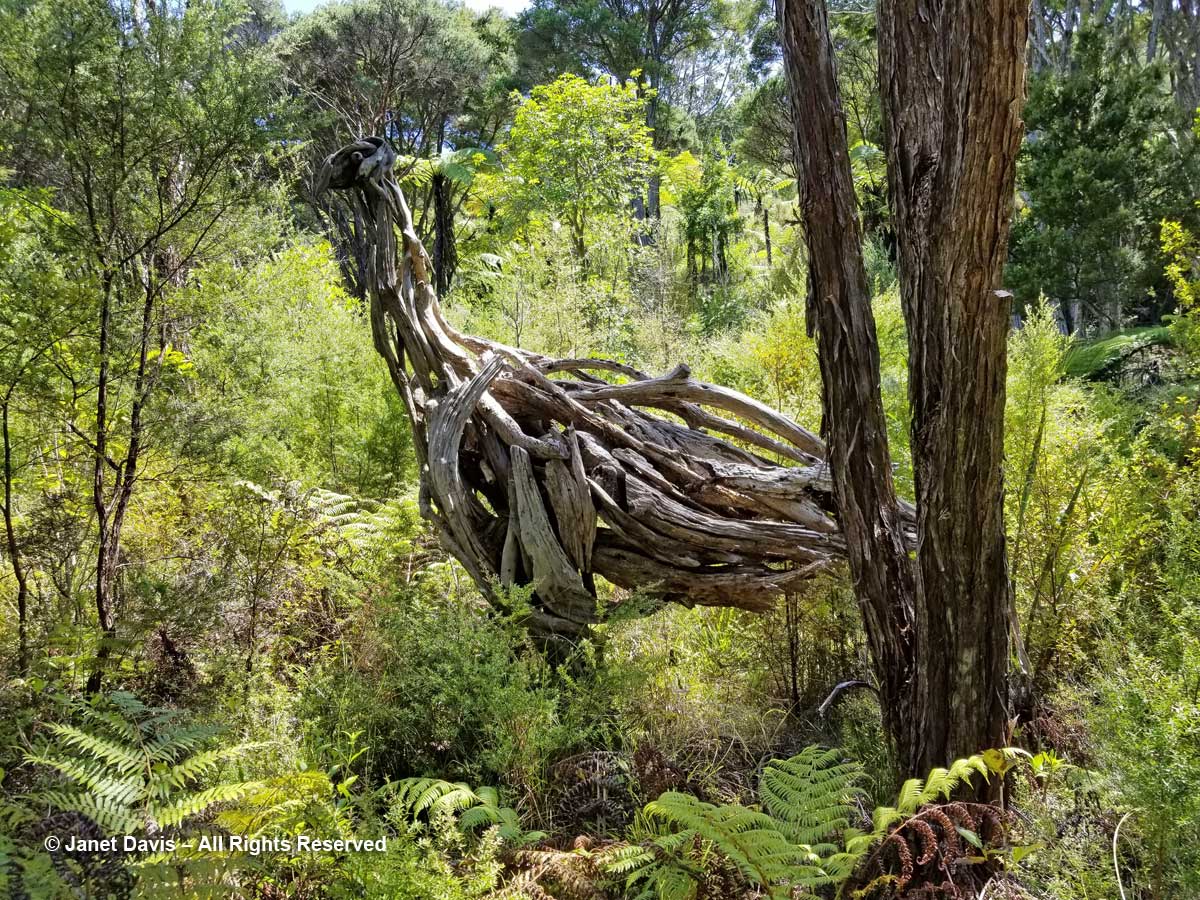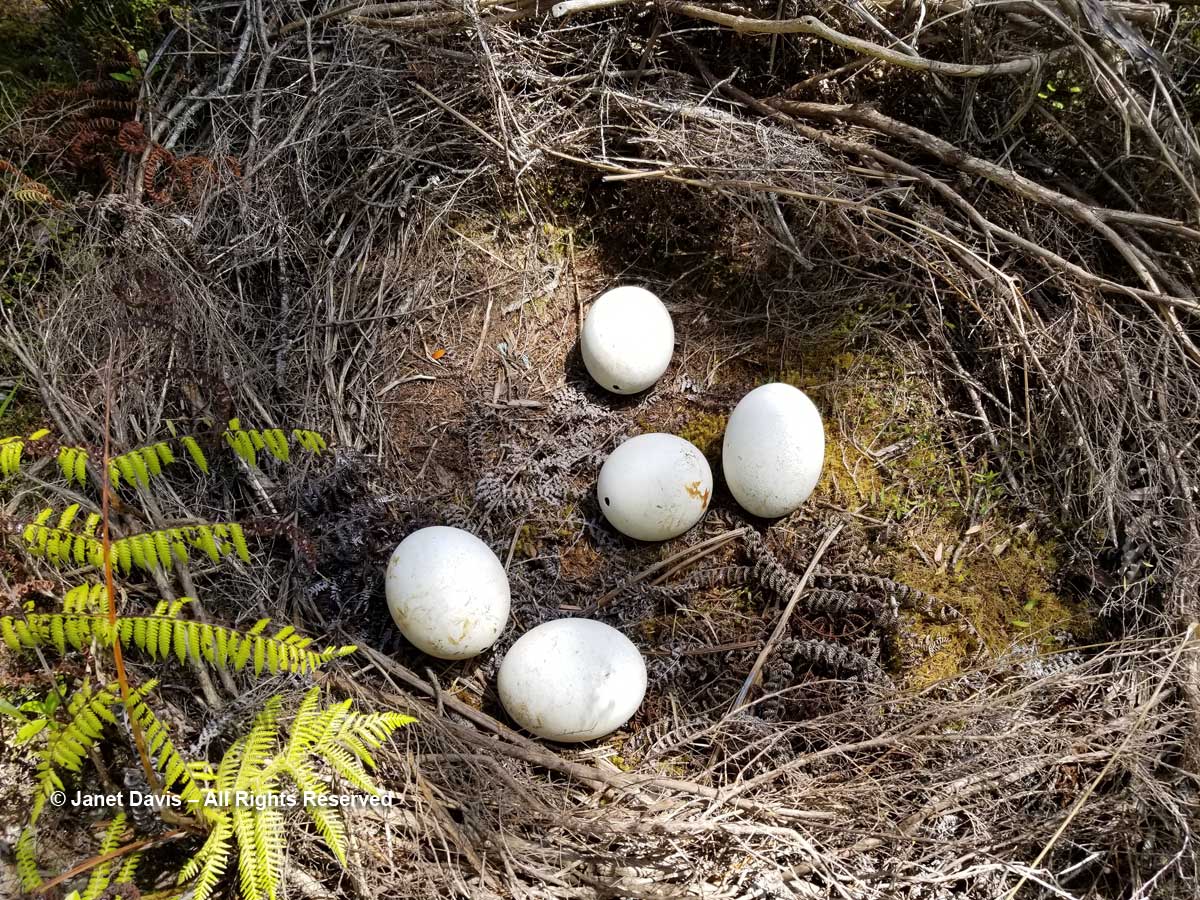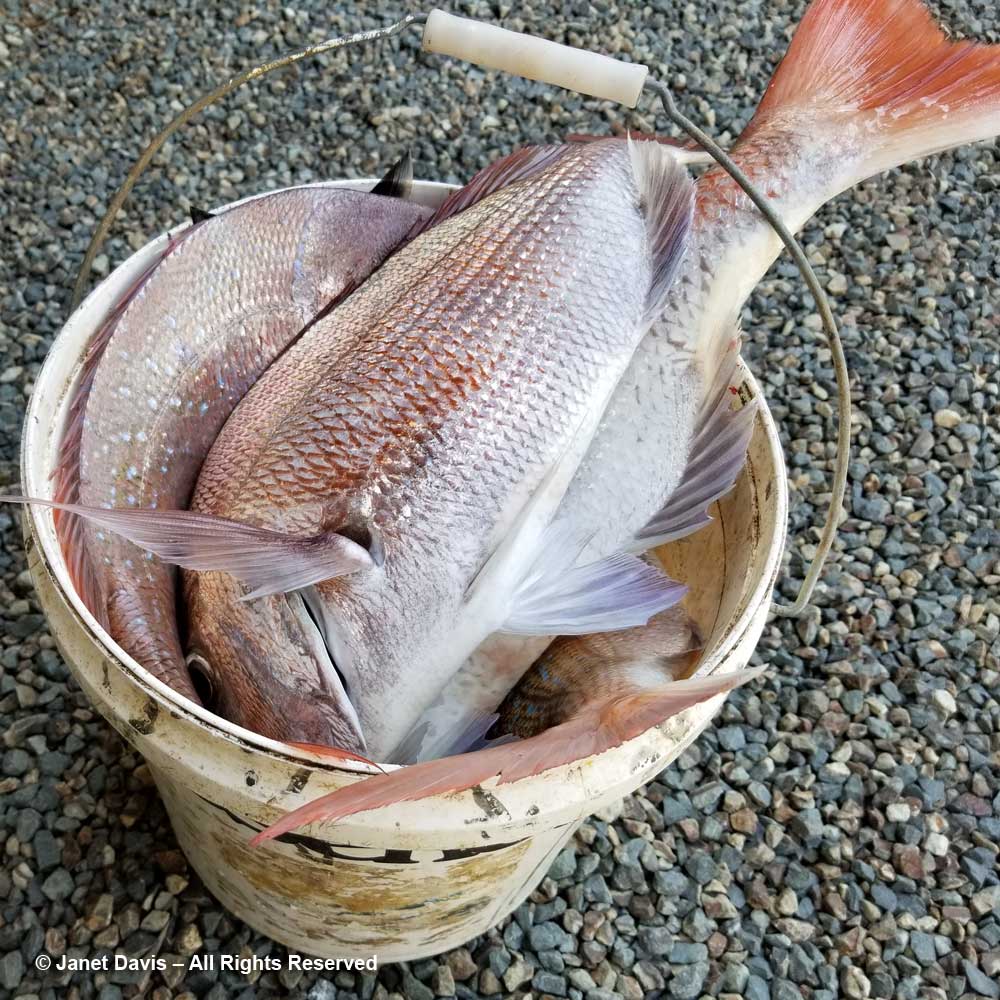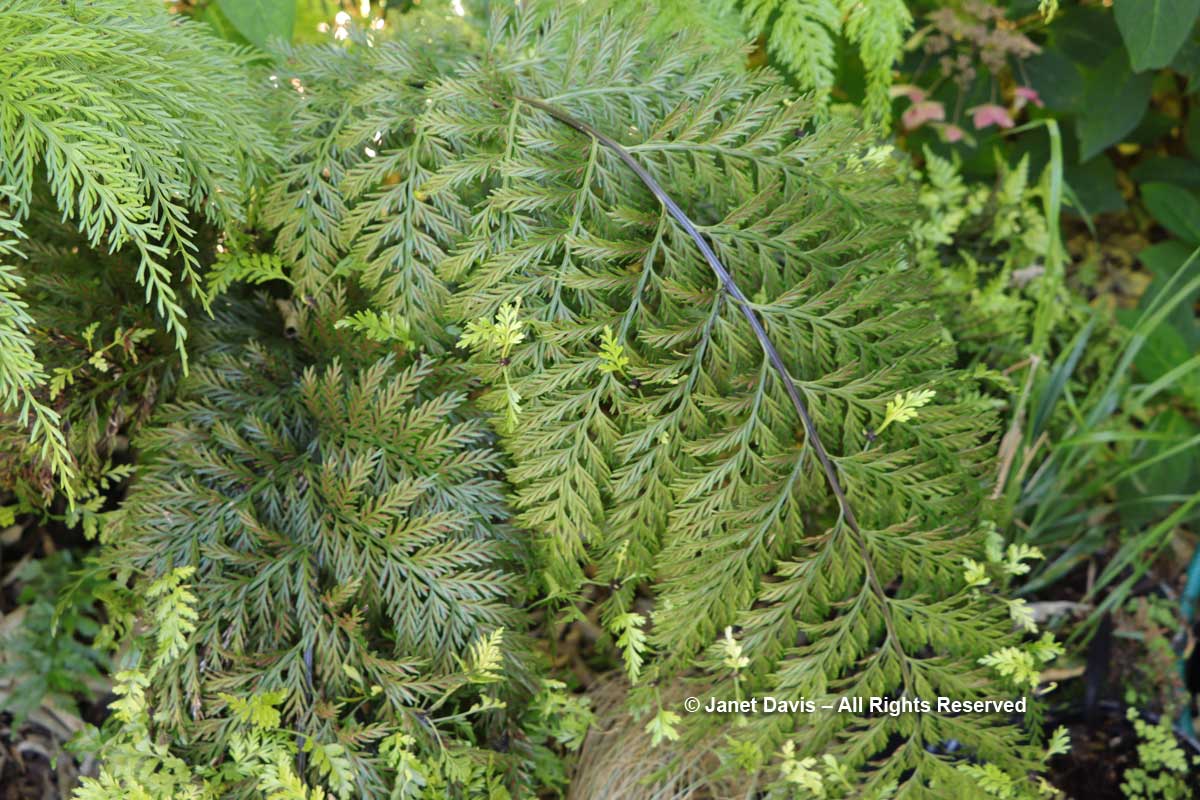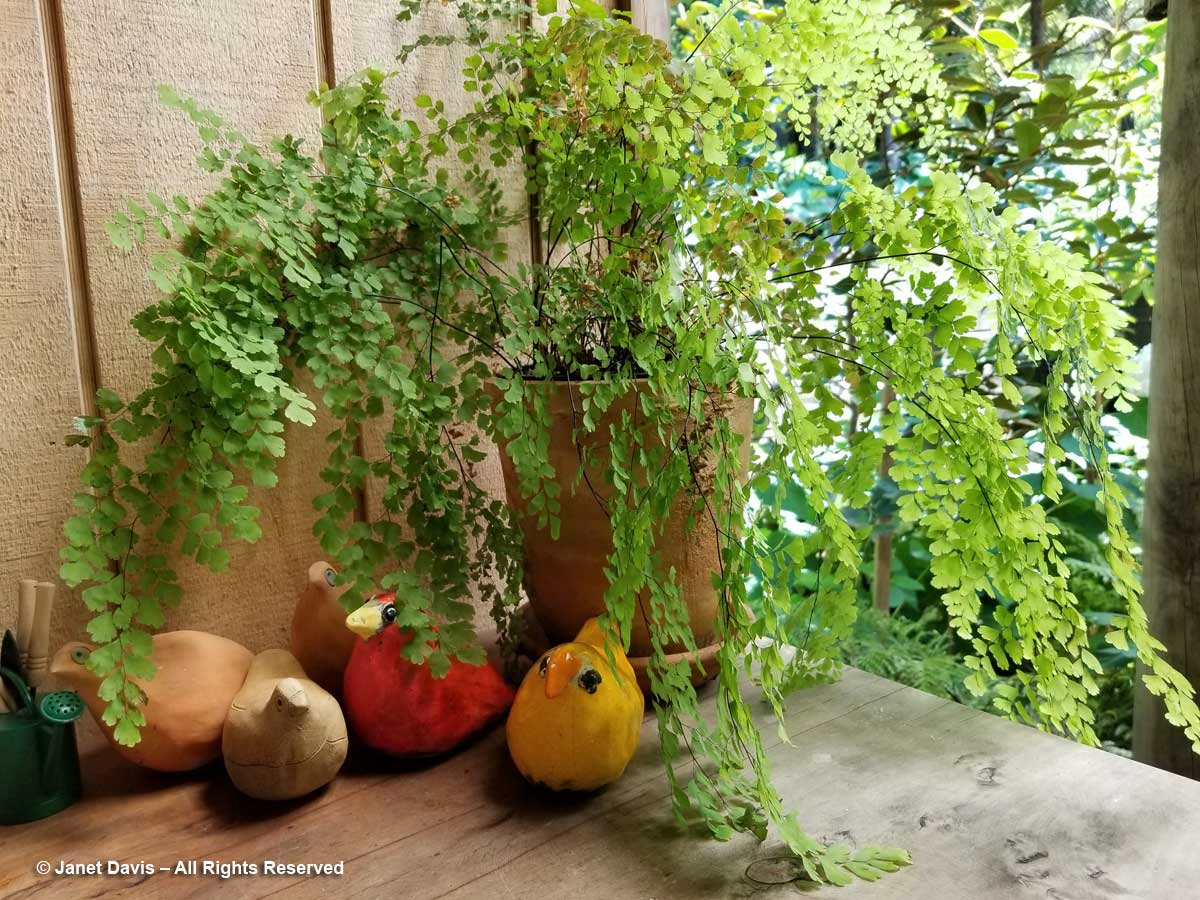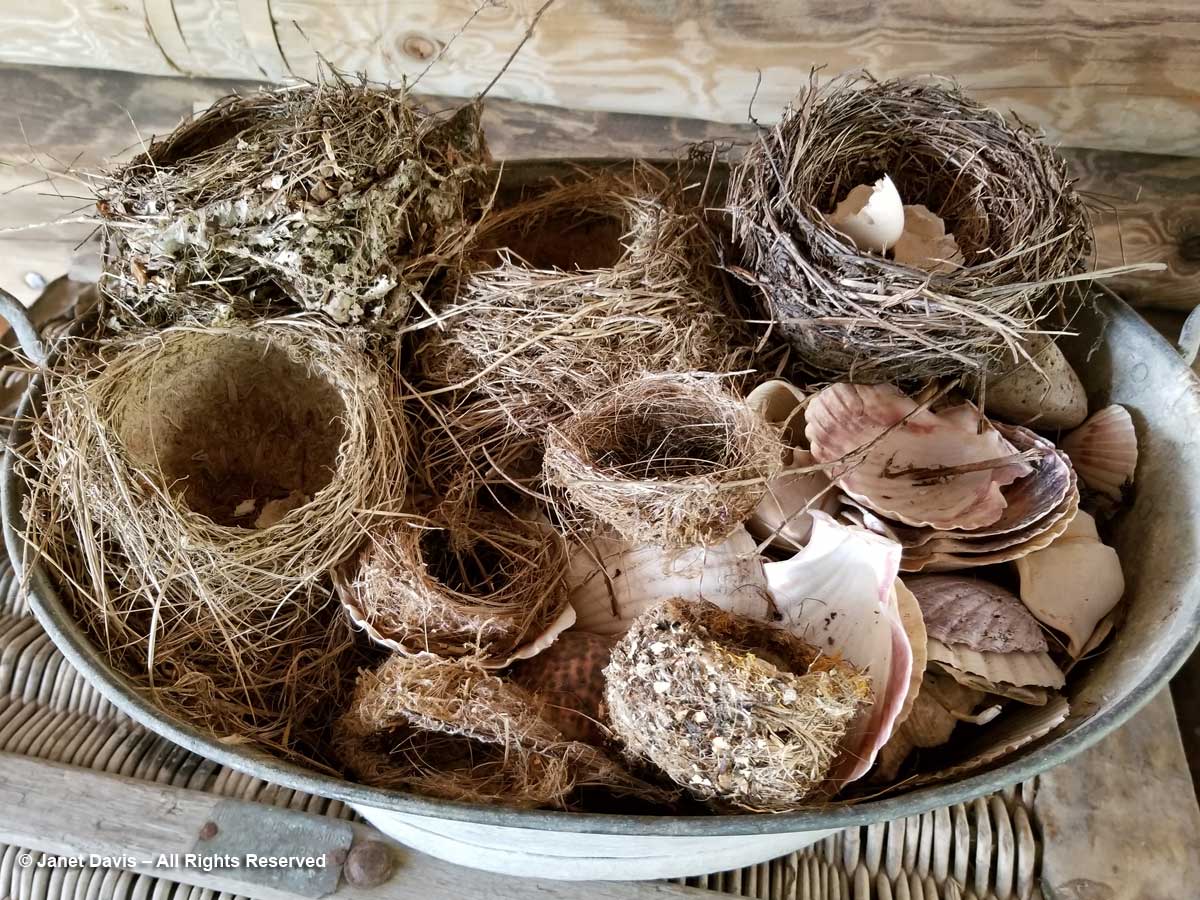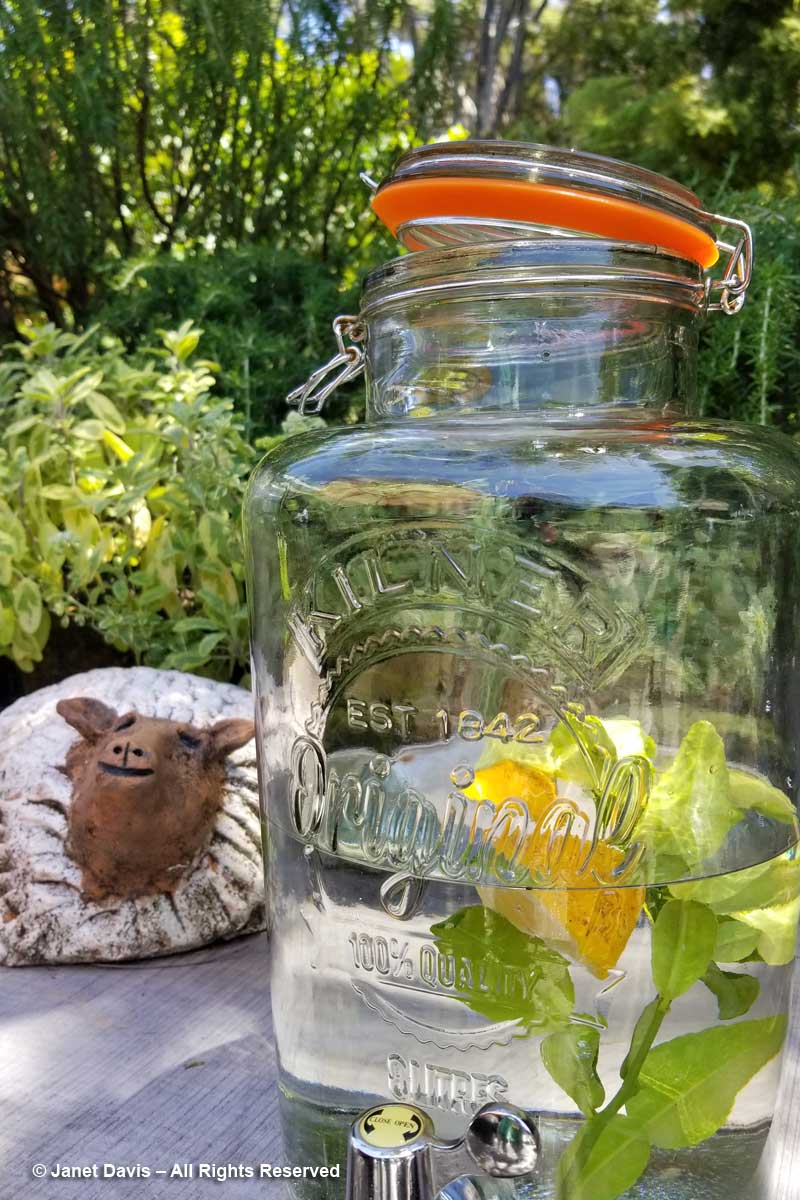On our sixth touring day with the American Horticultural Society in New Zealand, we visited Penny and Rowan Wiggins in their beautiful garden in Warkworth, 45 minutes north of Auckland. Apart from showing us the garden, they were also hosting us for lunch and the doors at the front were open to welcome us.
Penny and Rowan are gardeners’ gardeners, literally, since they met and worked together for many years at another famous Auckland area garden, Bev McConnell’s 50-acre Ayrlies.
Back in 2006, when they bought their 2-acre property, it was a dairy farm or “paddock”, as they call such places in New Zealand. So they named it The Paddocks and began to transform it from forage to flowers. Twelve years later, The Paddocks is a New Zealand Garden of National Significance and the only animals roaming the range are the family’s black Labradors.
Situated on a slope (as is much of hilly, mountainous, narrow New Zealand), it was necessary for Rowan to terrace, flatten and design drainage for the part of the property nearest their new home to enable them to have a usable back patio area. Here they planted perennials and roses that one would see in a typical ‘English garden’. And since both Rowan and Penny were born in England, it was a style they loved.
But those steps from the back patio also led to some of their other horticultural interests, like vegetable gardening.
Check out the wonderful lichen on this potager gate made from totara (Podocarpus totara).
The little potager was filled with vegetables, herbs and flowers for cutting……..
… including anise hyssop (Agastache foeniculum)…..
….. and annual zinnias. By the way, did you know that New Zealand has NO native bumble bees? I had seen so many, it seemed strange, but all four of the Bombus species (and honey bees too) were imported from England as early as 1885.
Don’t you love this painted pot? And notice the raised beds and gravel paths.
I headed out the back gate of the potager and looked back at it from the orchard beyond. Look how neatly the hedge defines it.
The hillside orchard contains all kinds of stone fruits, including apples…..
….and citrus…..
…..and peaches which were nearly ripe and netted to keep away hungry birds.
It was time for our picnic lunch at the house so the rest of the tour had to wait. While eating, it was fun to read how Rowan and Penny’s garden had been celebrated in the pages of New Zealand’s premier gardener’s magazine. (Penny is known for her foxgloves!)
Then I headed up through a formal hedge angled away up the slope from the vegetable garden and orchard. In spring (November in New Zealand), those ‘Profusion’ crabapples arched over the bottom of the hedge would have looked gorgeous from the house.
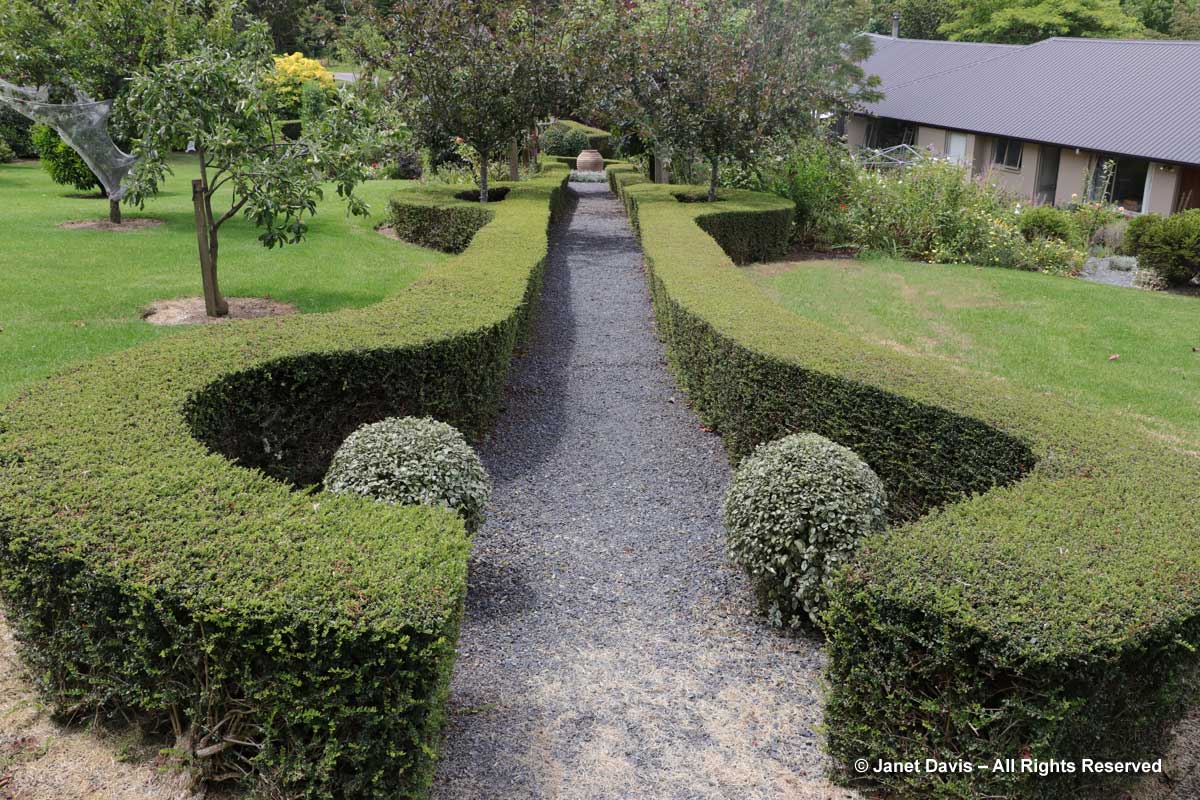
Now I was in the olive grove. In 2011, Penny and Rowan planted 75 olive trees which produce almost a ton of fruit per year.
Harvest time involves lots of friends picking for the opportunity to share in the pressed oil.
At the very top of the garden was a sweet little garden house…..
….. which I would die to have. What a wonderful spot to escape weeding and chores.
I wandered back down the slope and found a textural planting with grasses and South African restios, not to mention a good view of the neighbourhood.
Then I came around the front and noticed that one of our tour members was taking advantage of that lovely view.
Back at the house, I took more time to enjoy the border with its well-grown David Austin roses and…..
….. others being visited by honey bees. (Singles and semi-doubles often yield abundant pollen for bees.)
It was time to leave and head back to Auckland where we started our tour. Tomorrow we would be flying to Queenstown on the South Island. I enjoyed this border with its hydrangeas and tall Joe Pye weed (Eutrochium sp.) and its attractive fountain.
A water feature like this makes so much sense and adds that lovely sound of splashing water (says the owner of a high-maintenance garden pond which she would love to trade….)
As we headed out of the garden, I spotted a native of New Zealand’s Antipodean neighbour, Australia: yellow kangaroo paw (Anizoganthos flavidus).
Finally, I had to take a little peek behind the fence on the far side of the house where it was good to find the nuts-and-bolts of the garden, a reminder that behind every beautiful garden are hard-working gardeners – like Rowan and Penny Wiggins.

